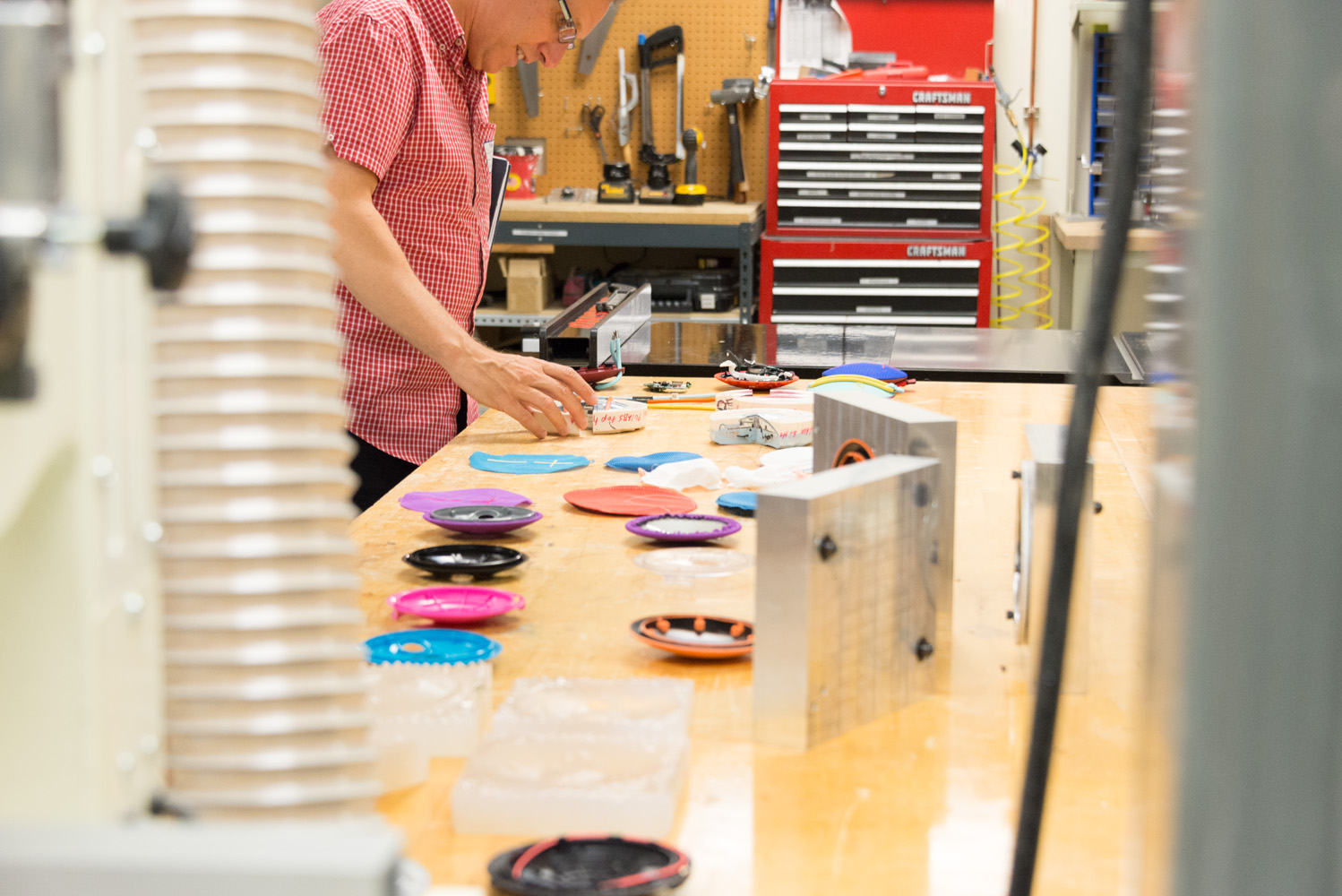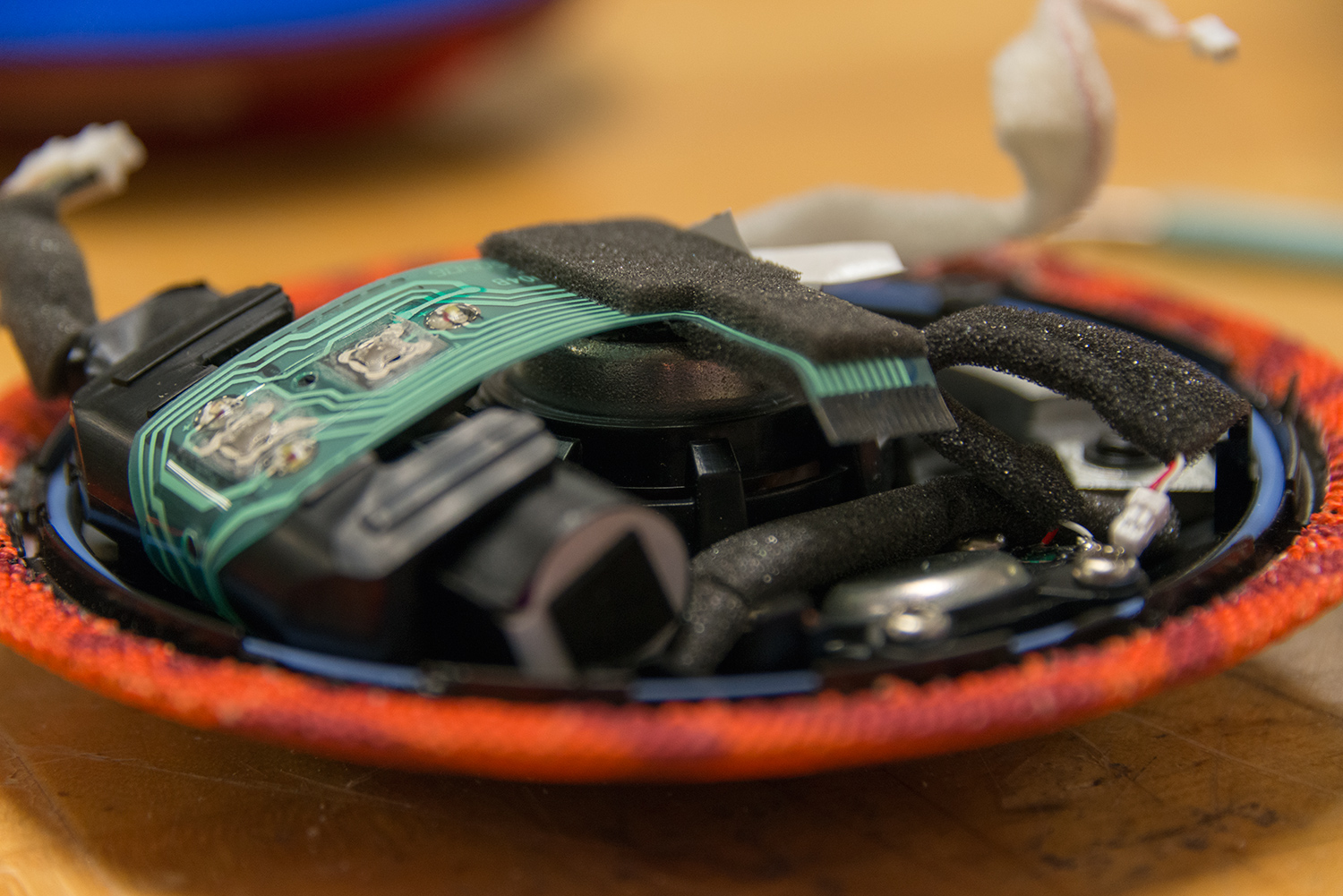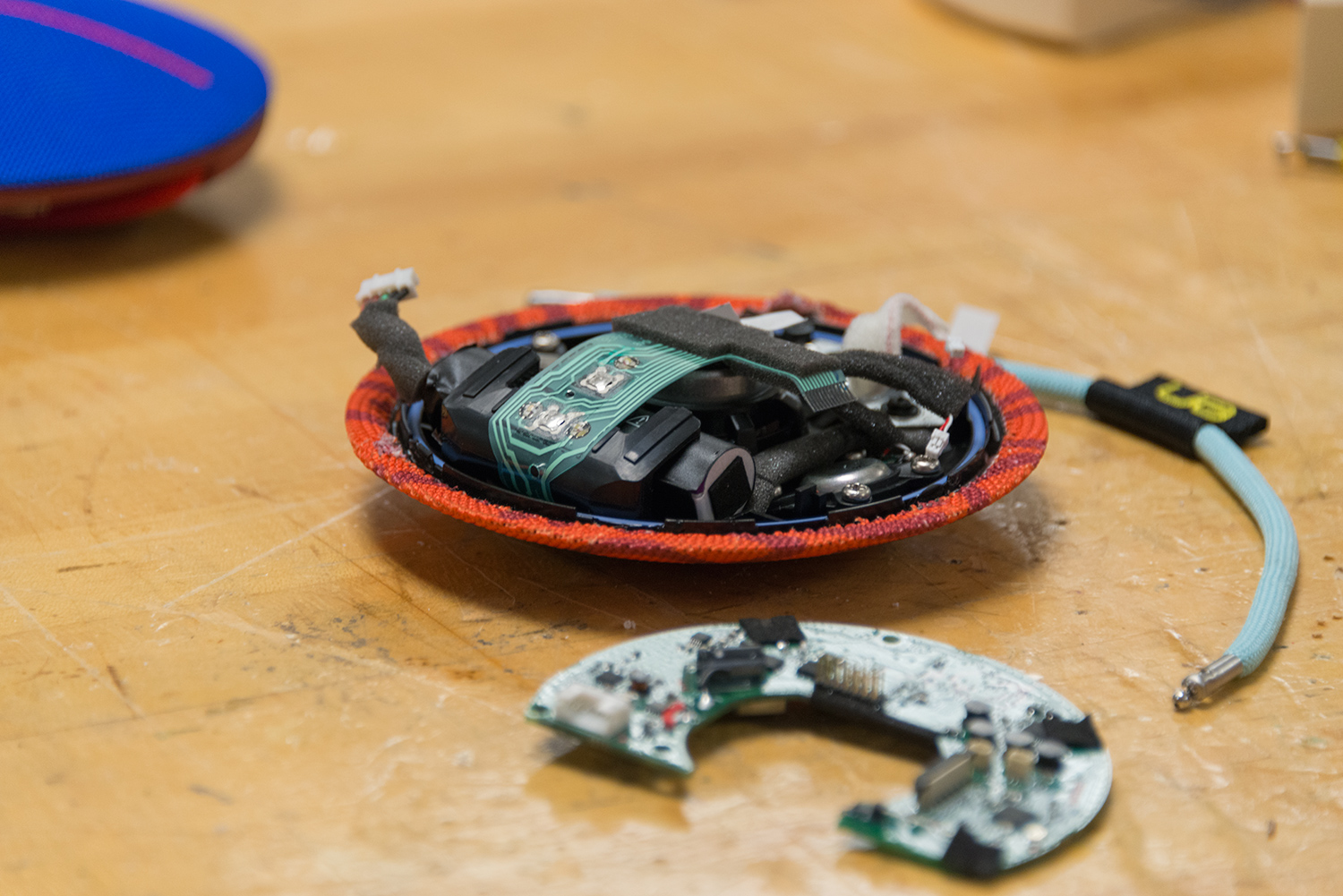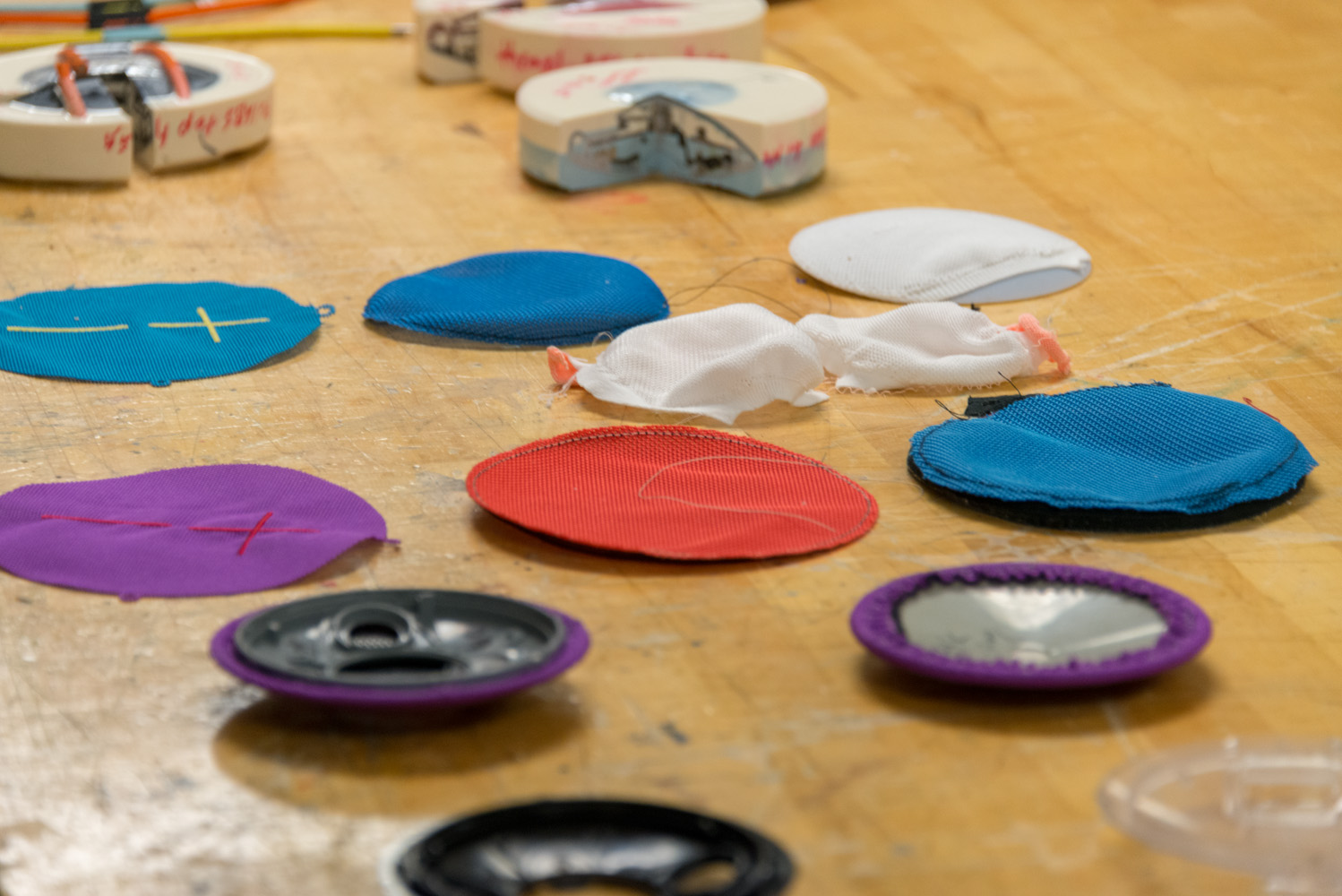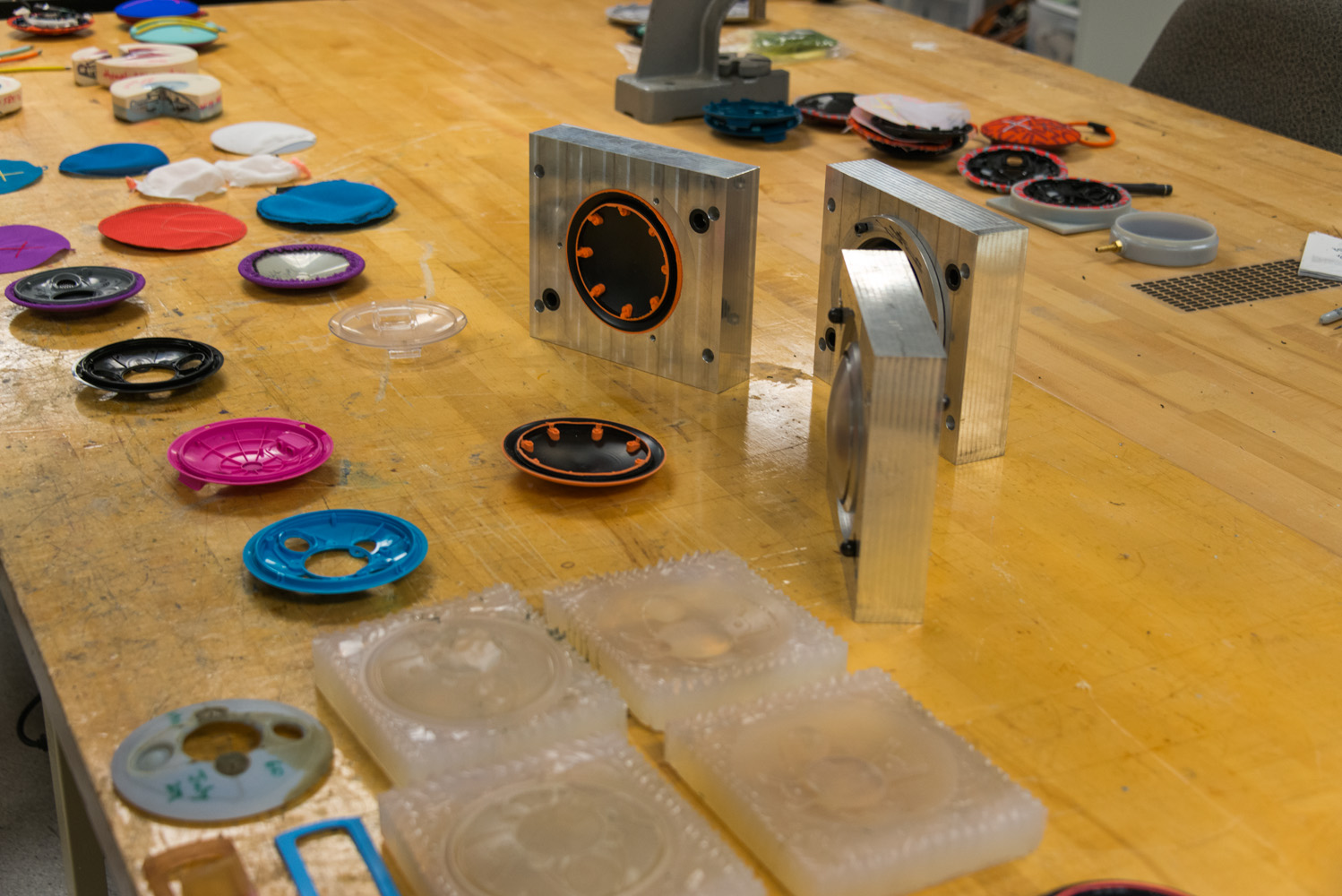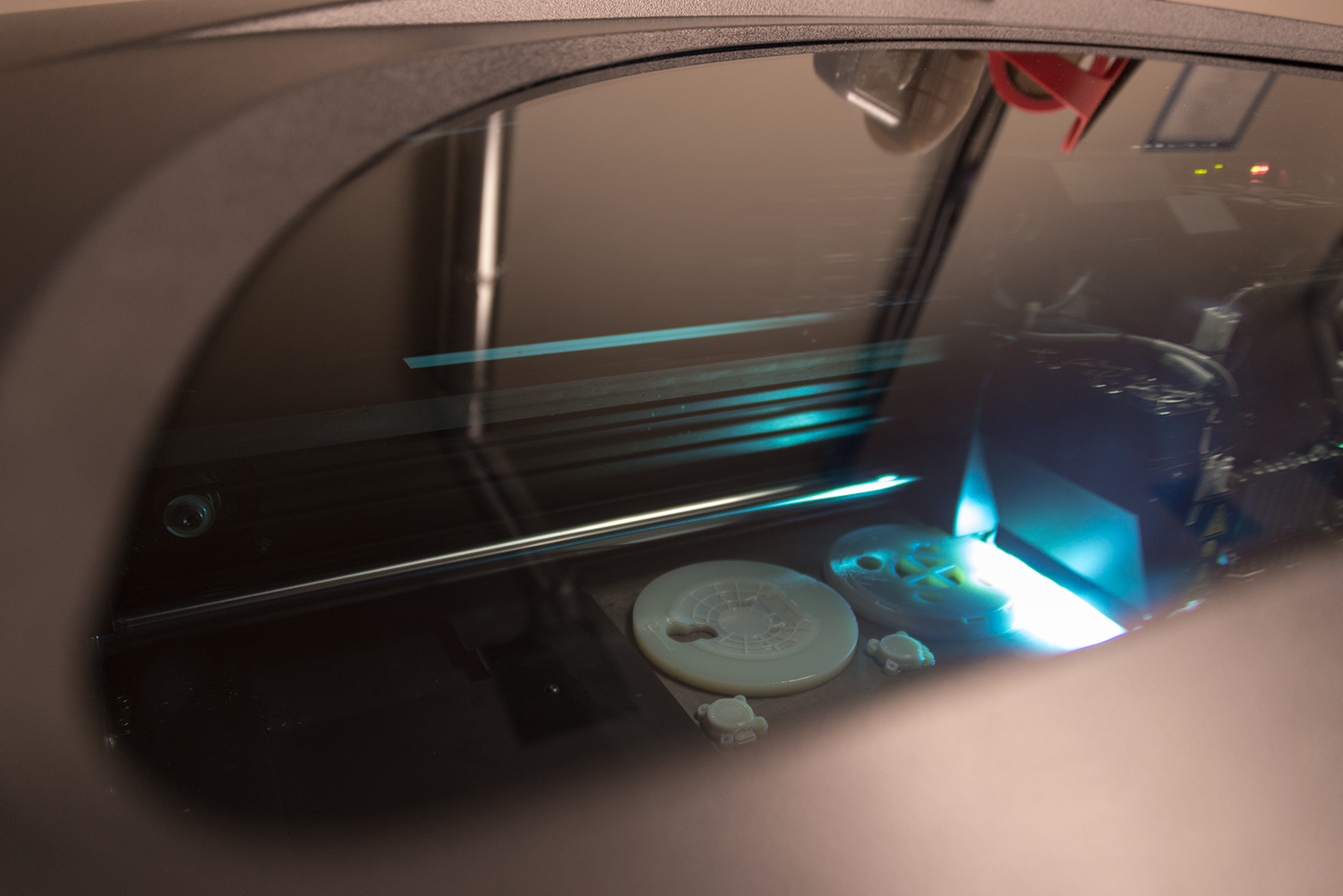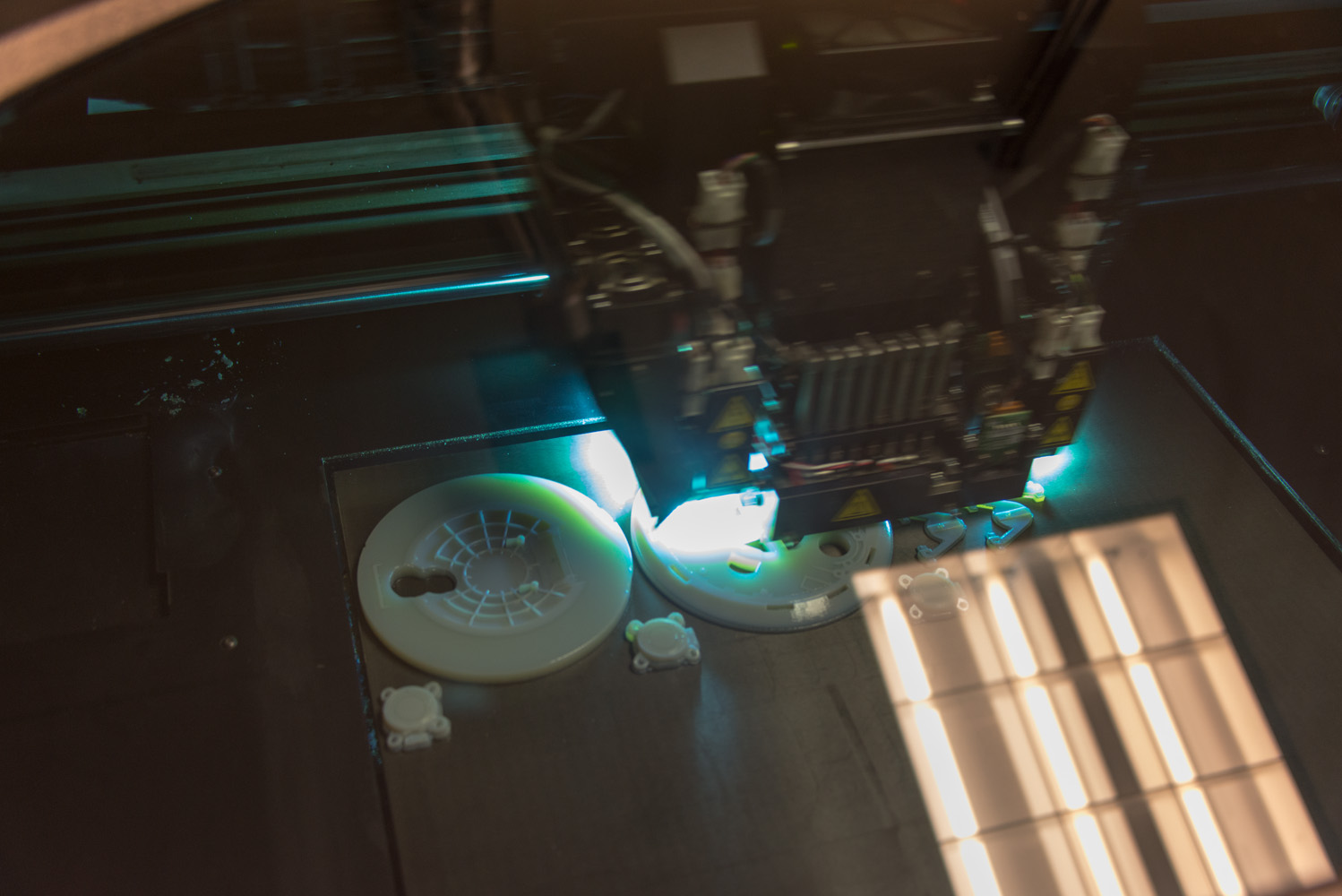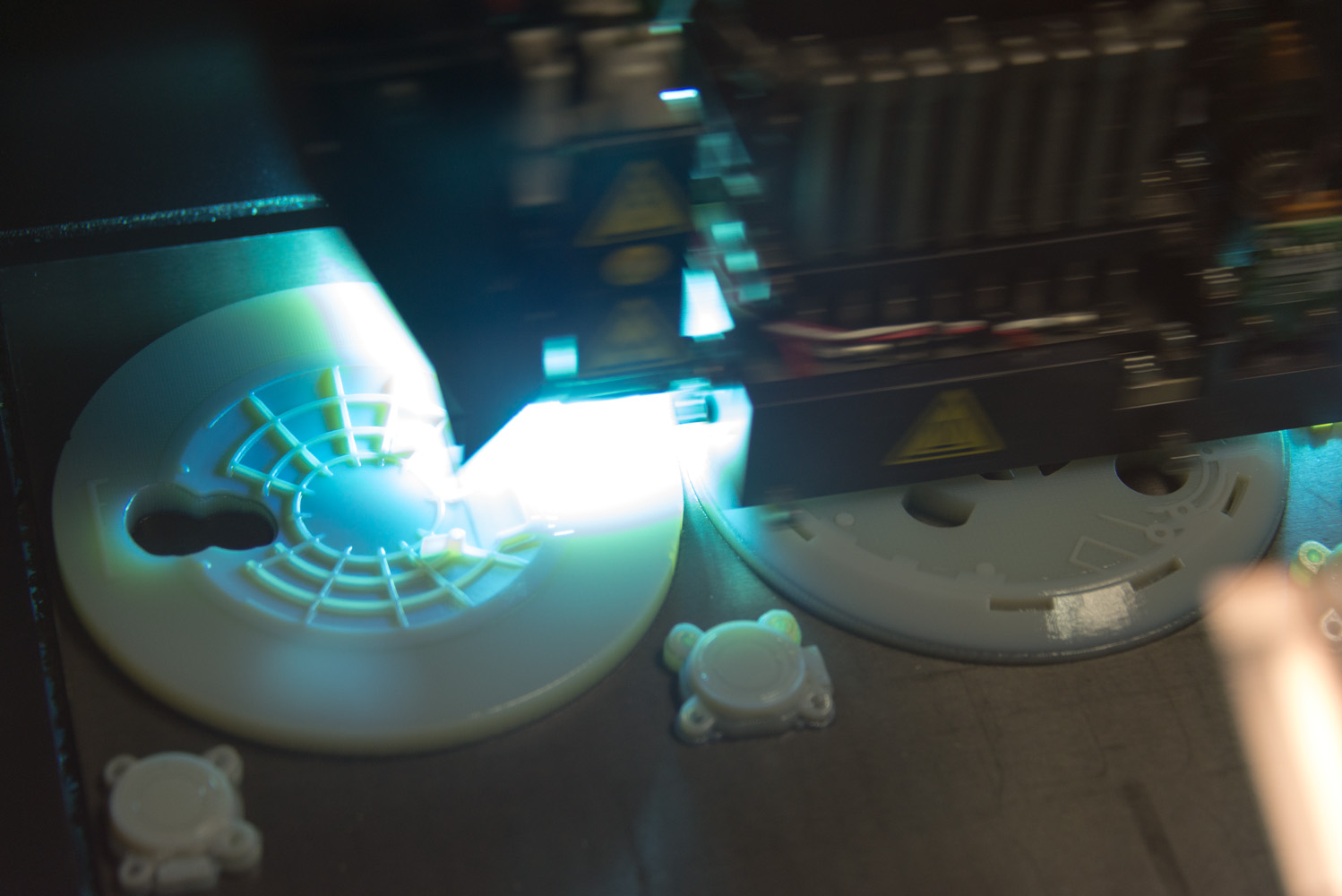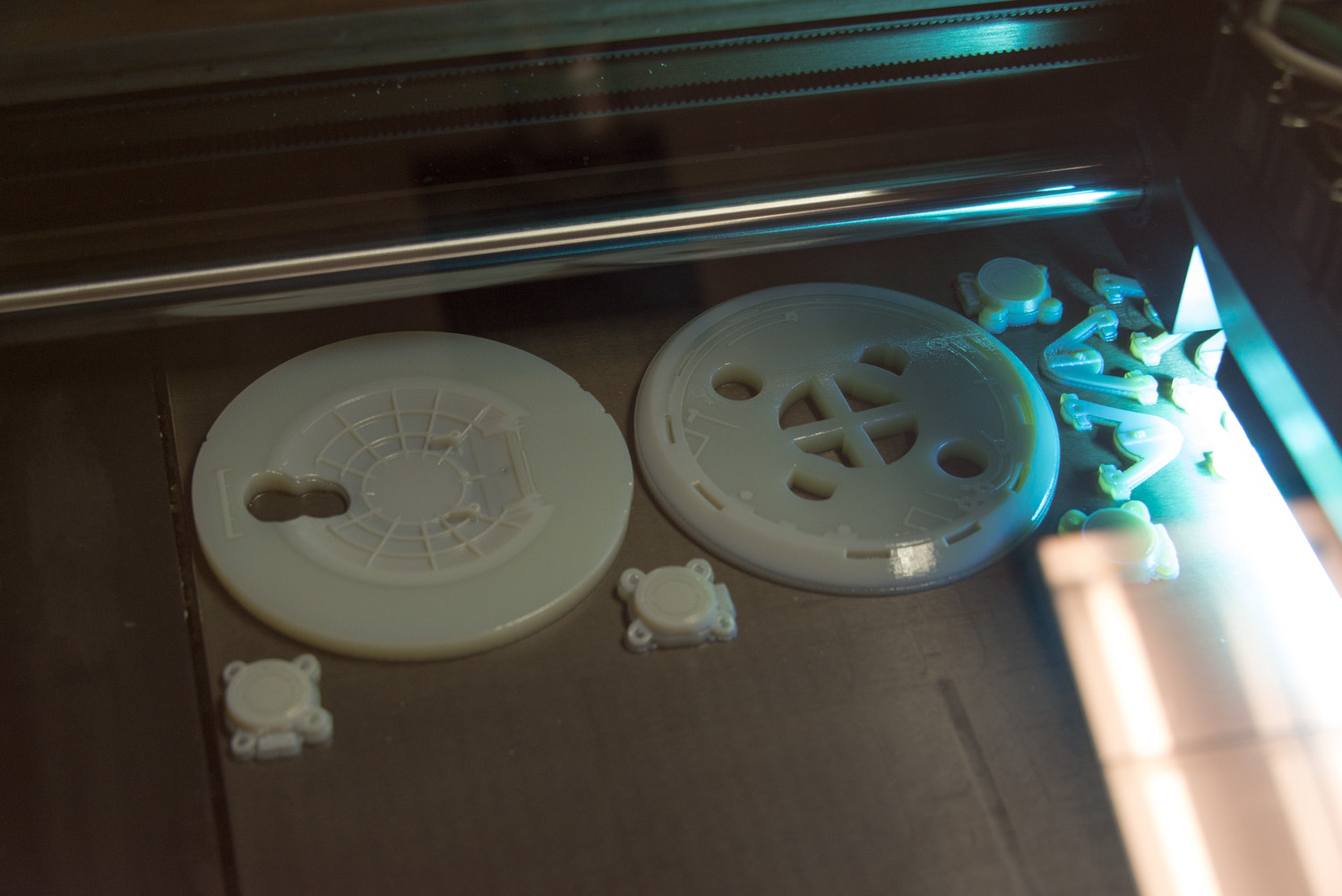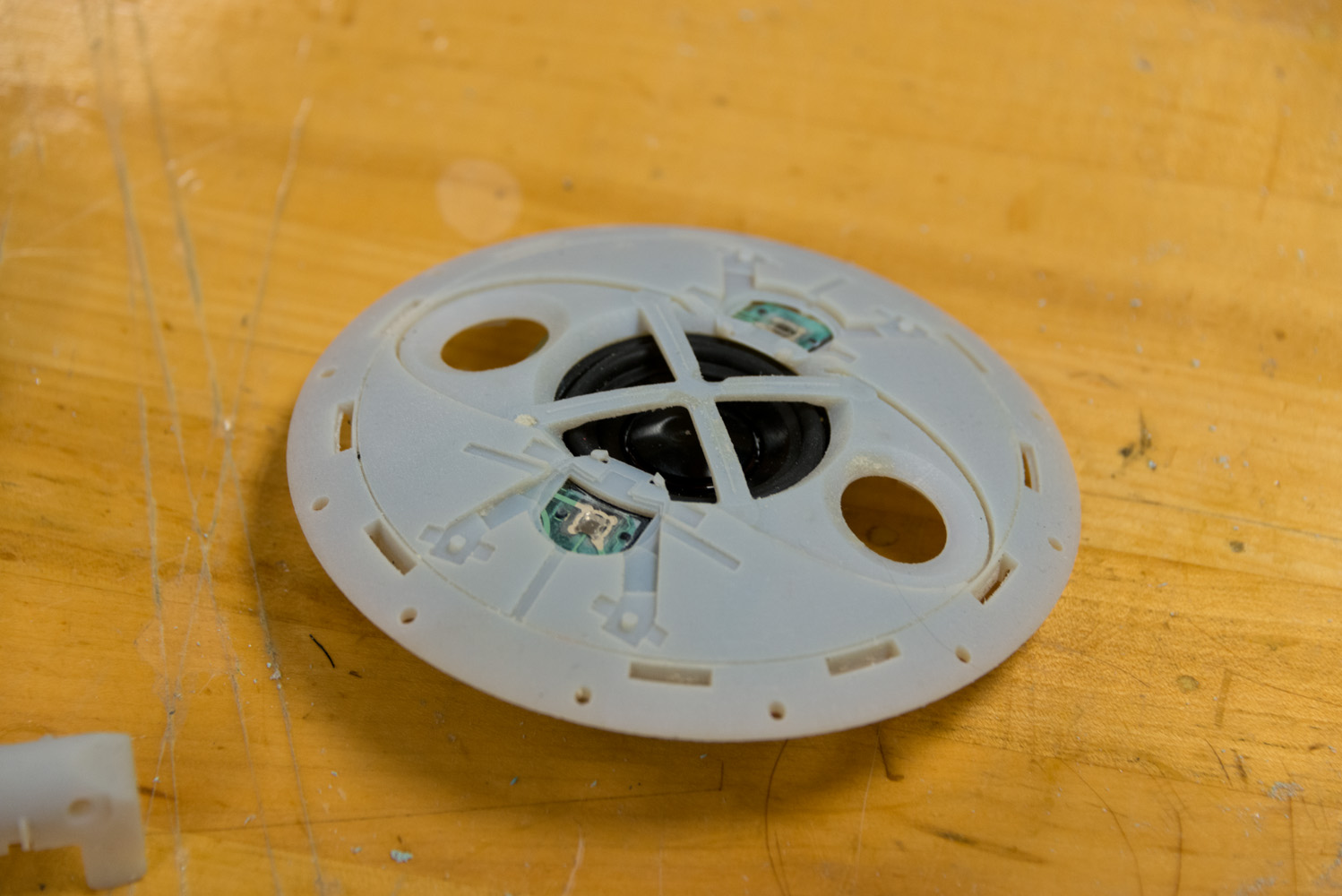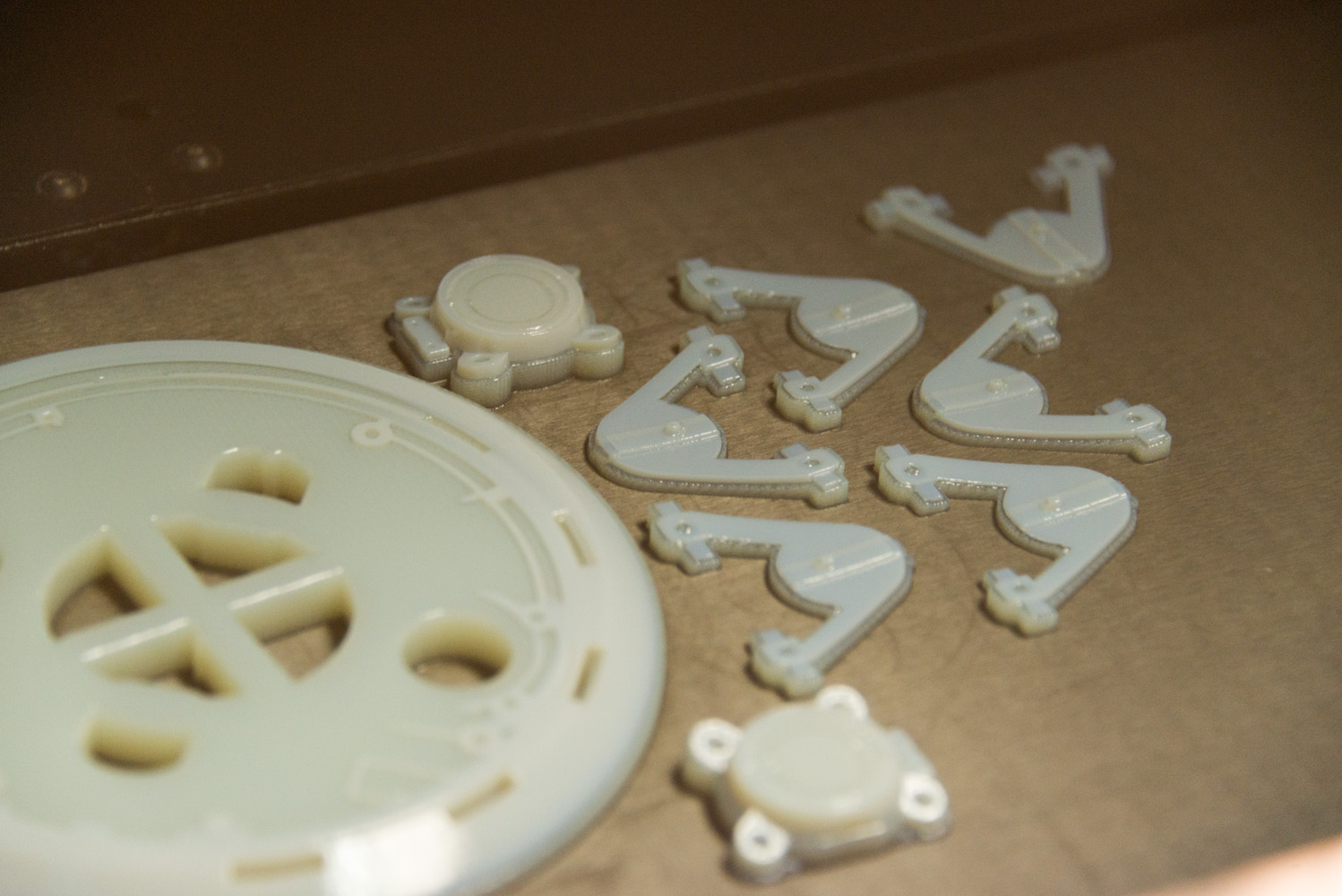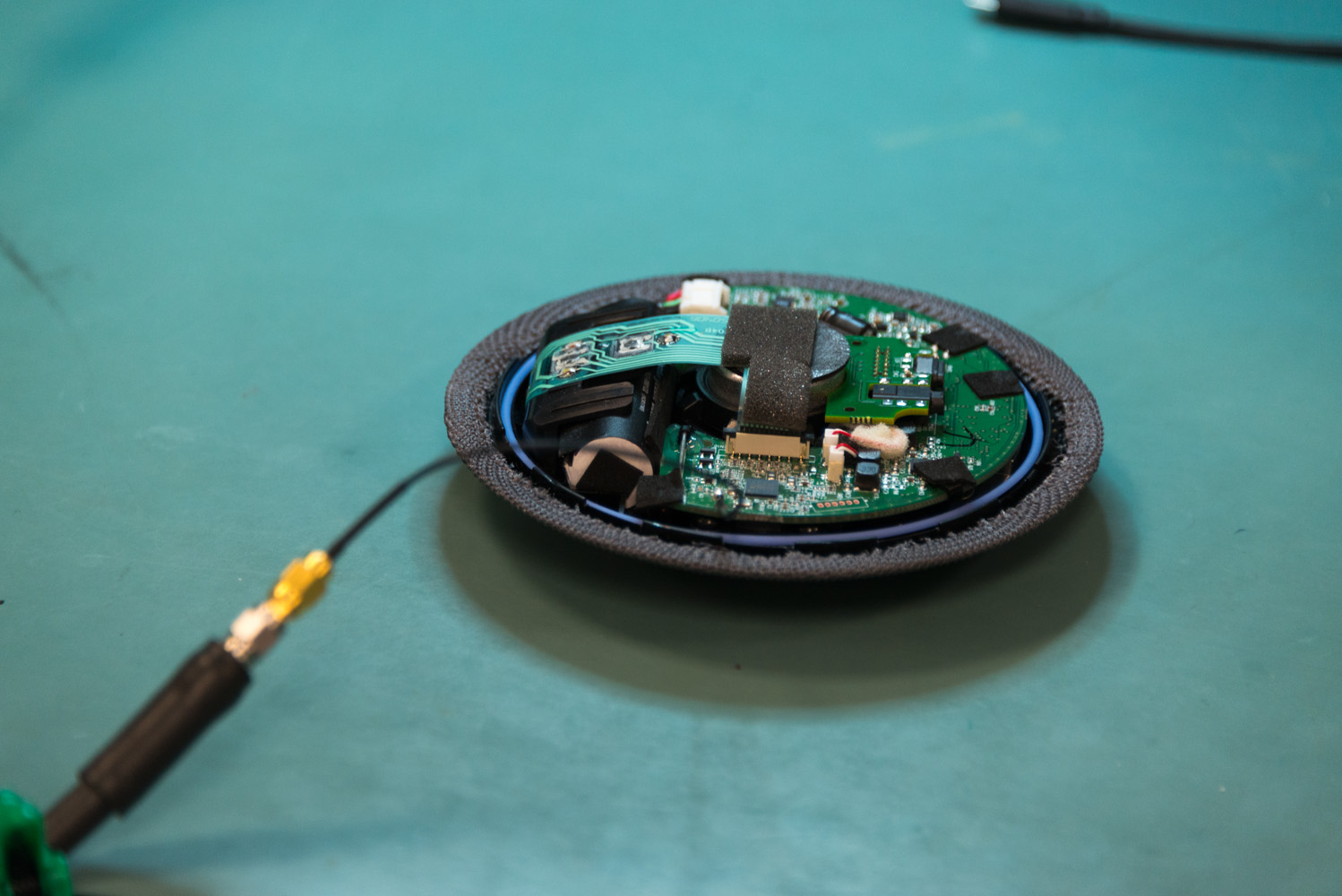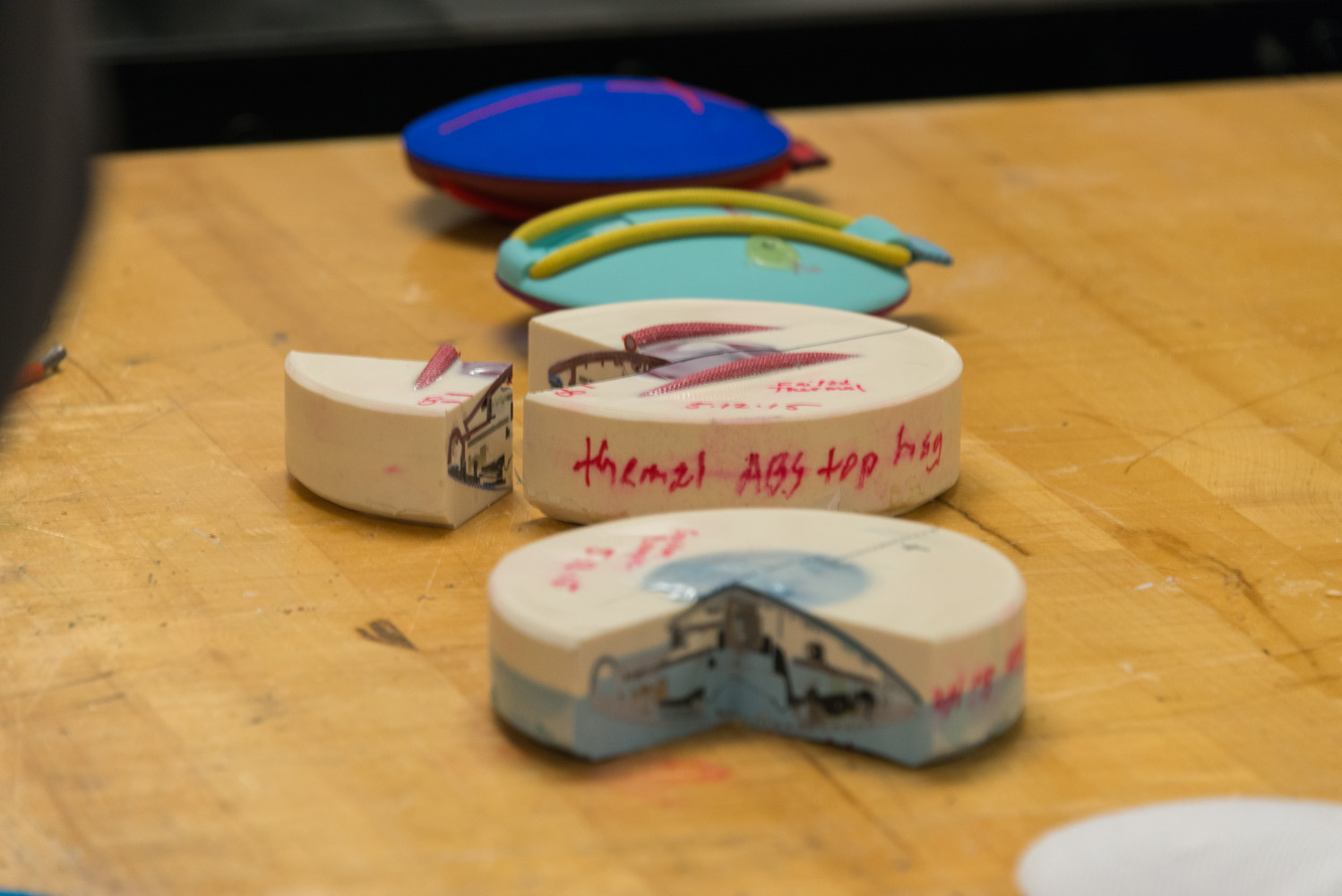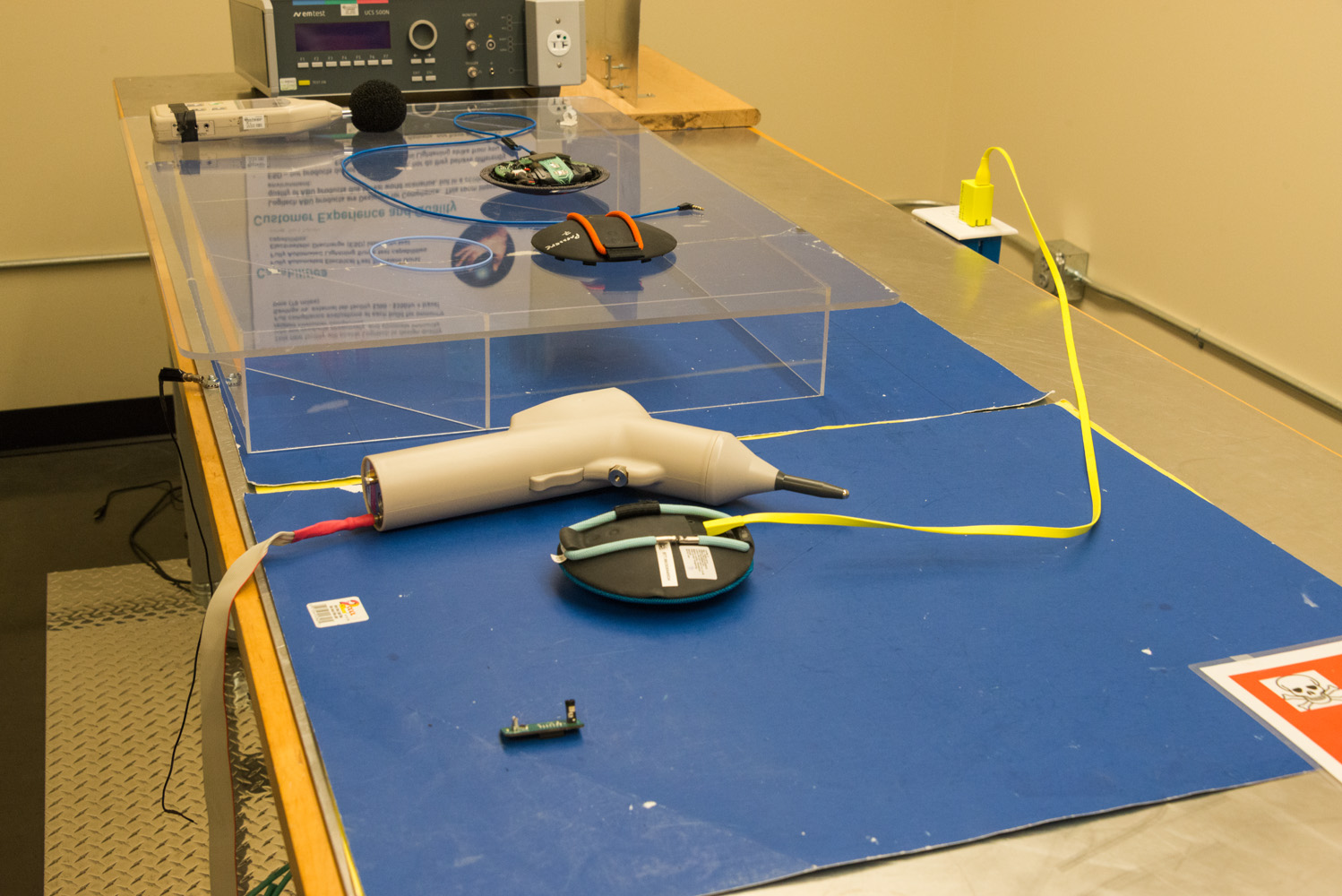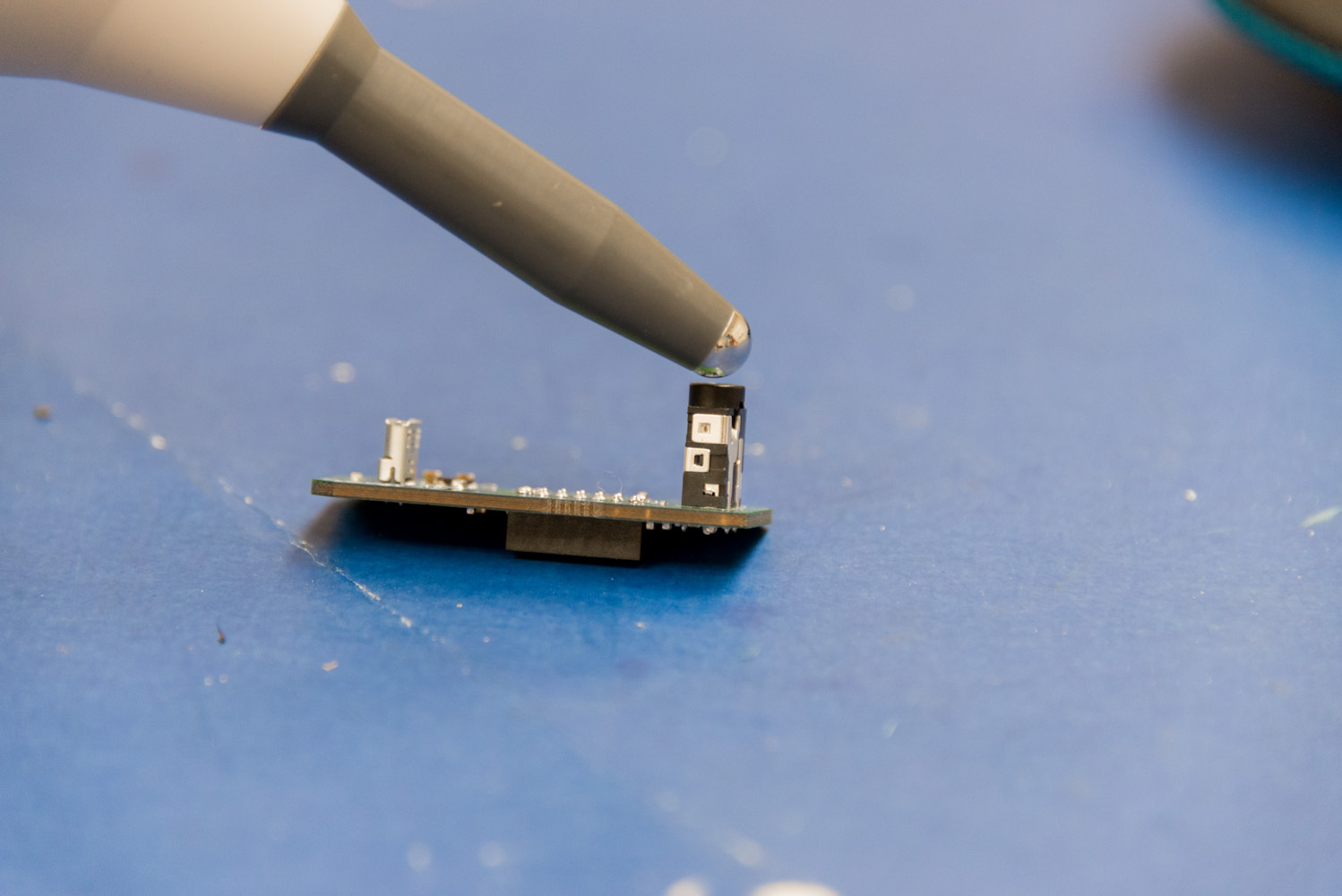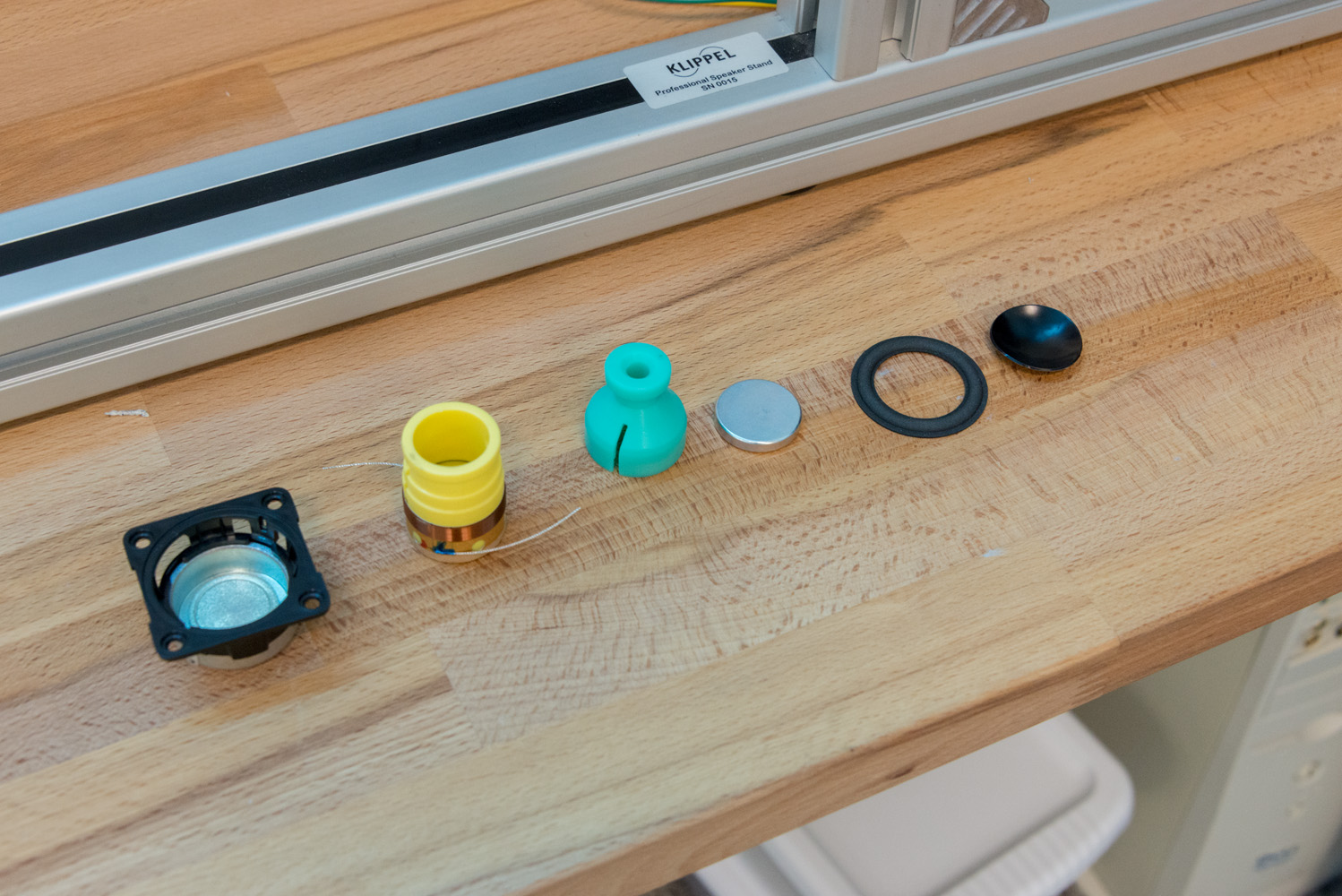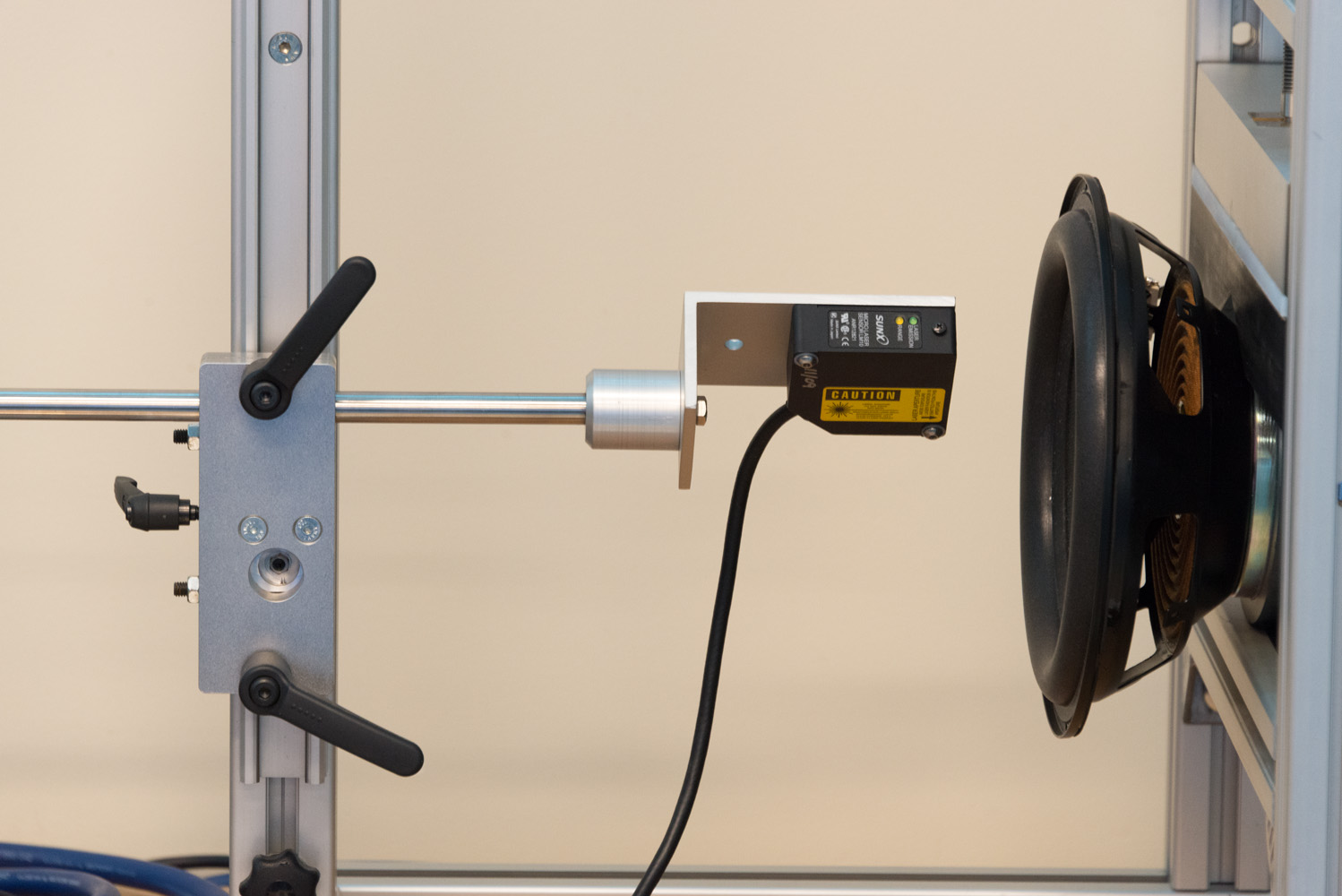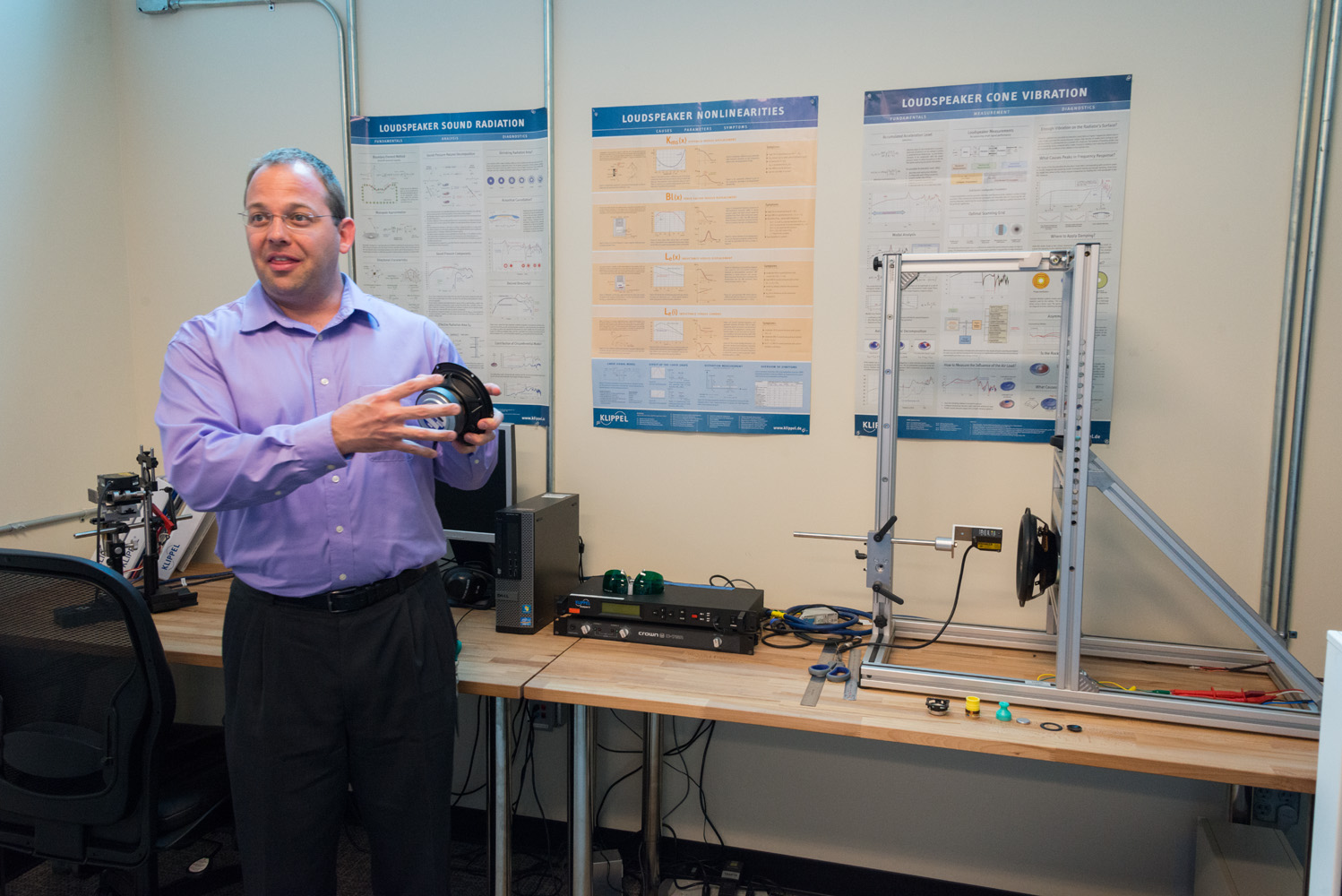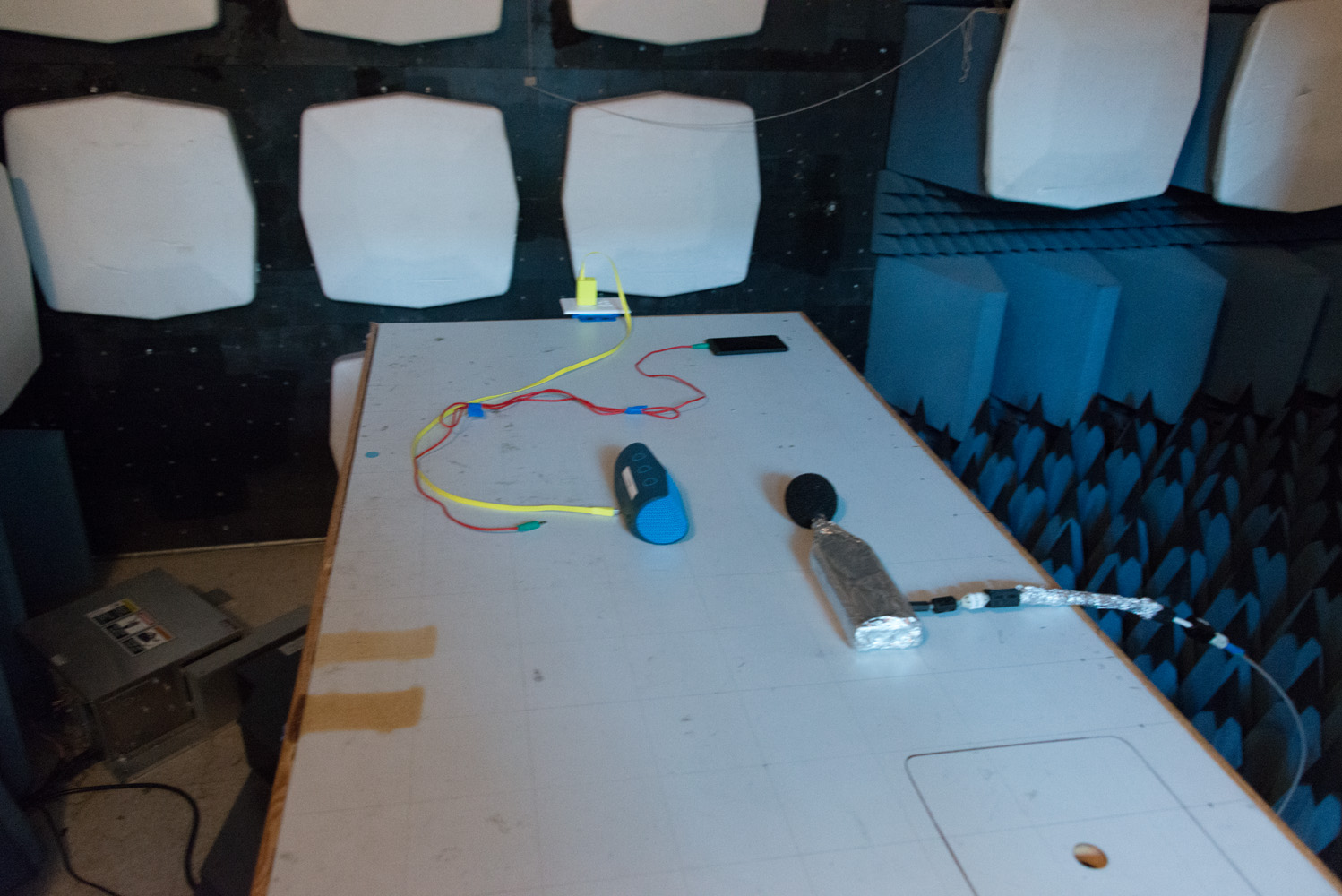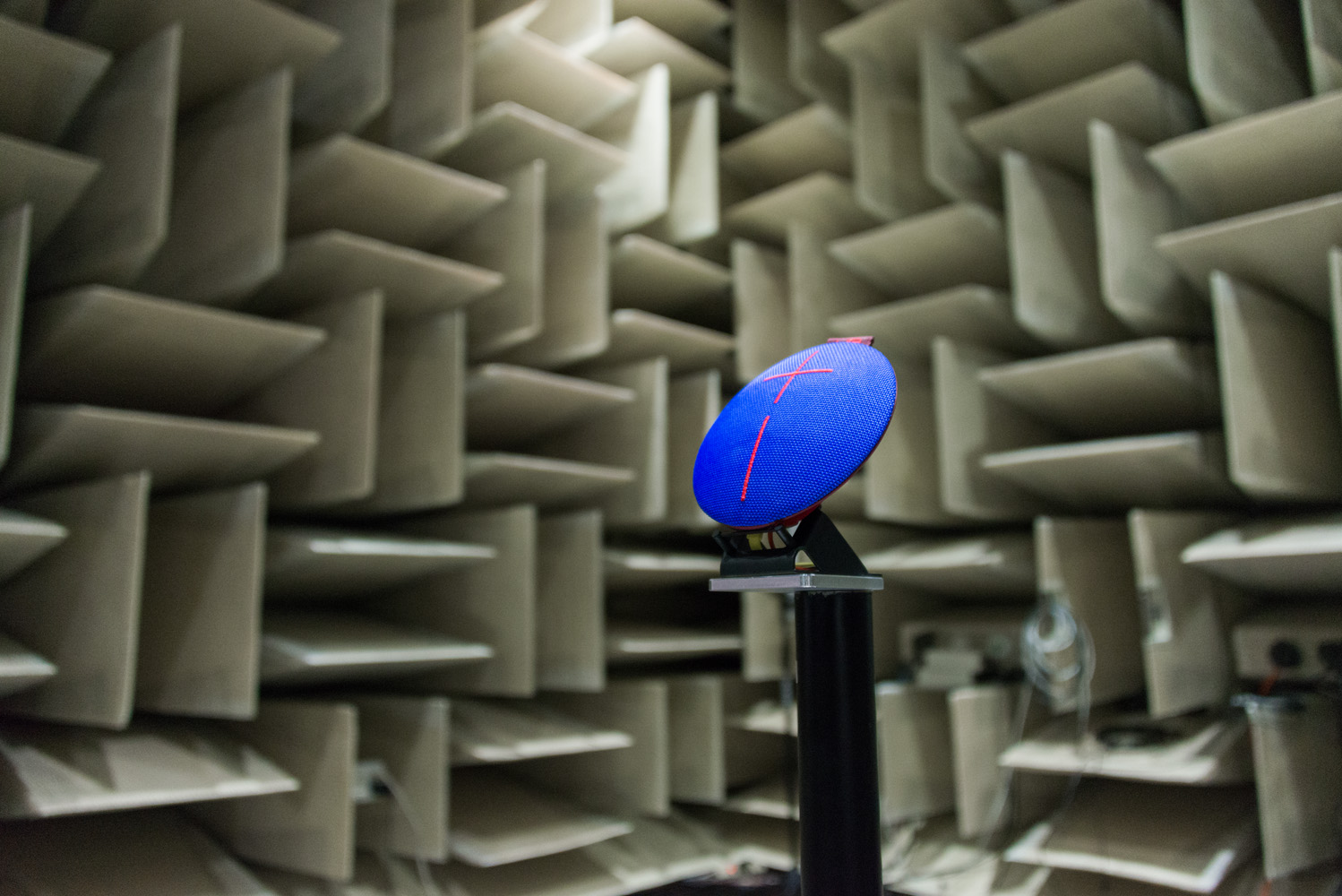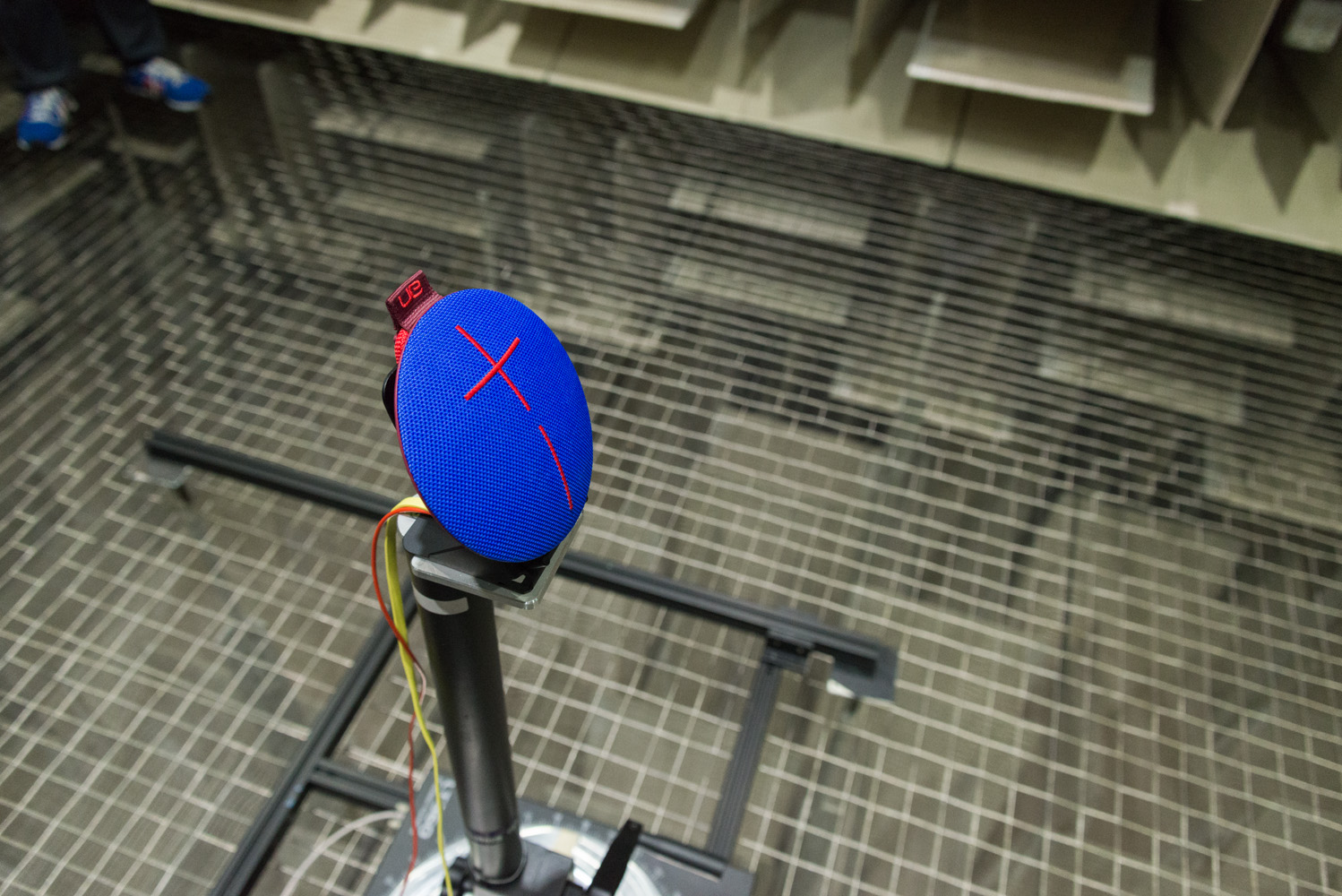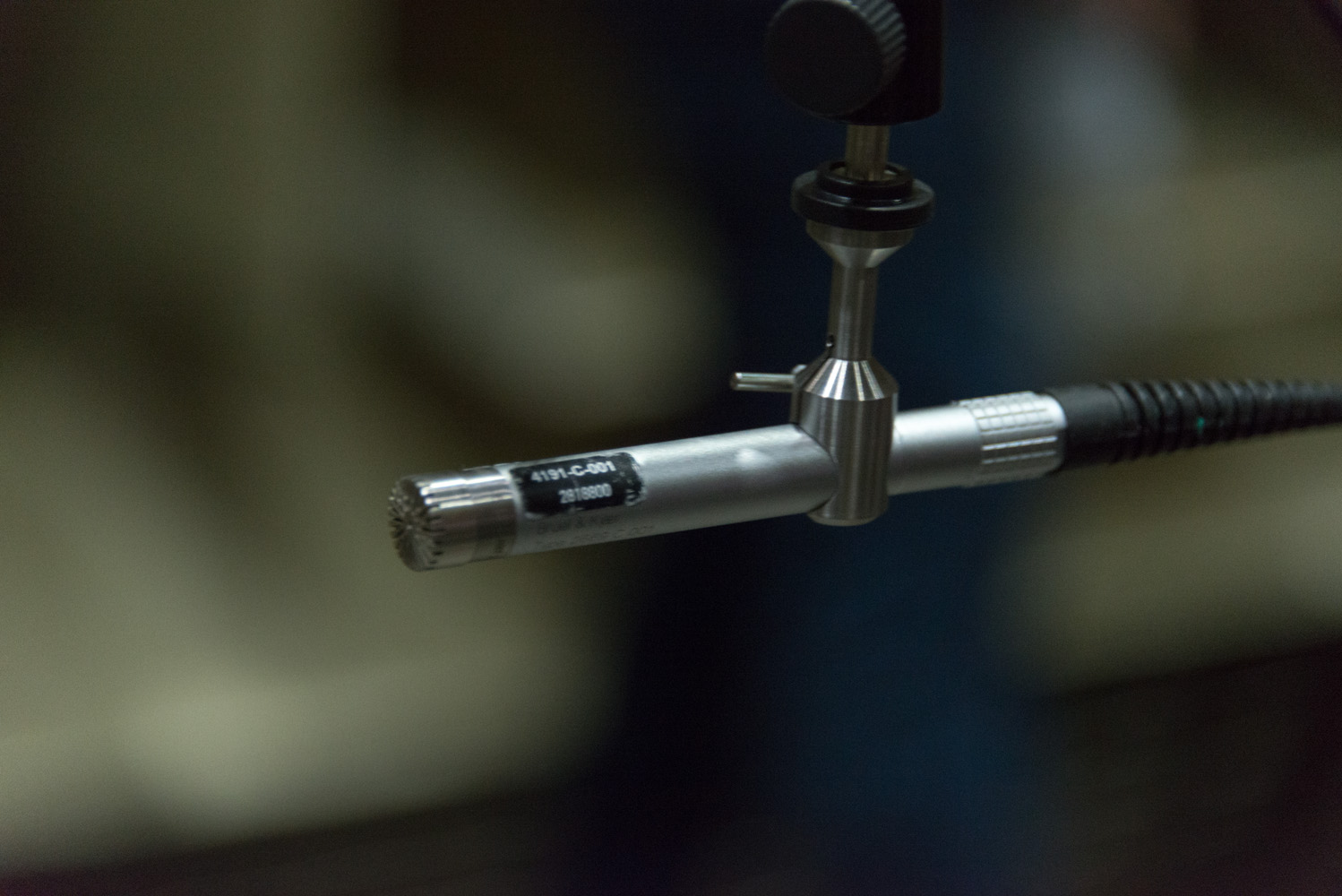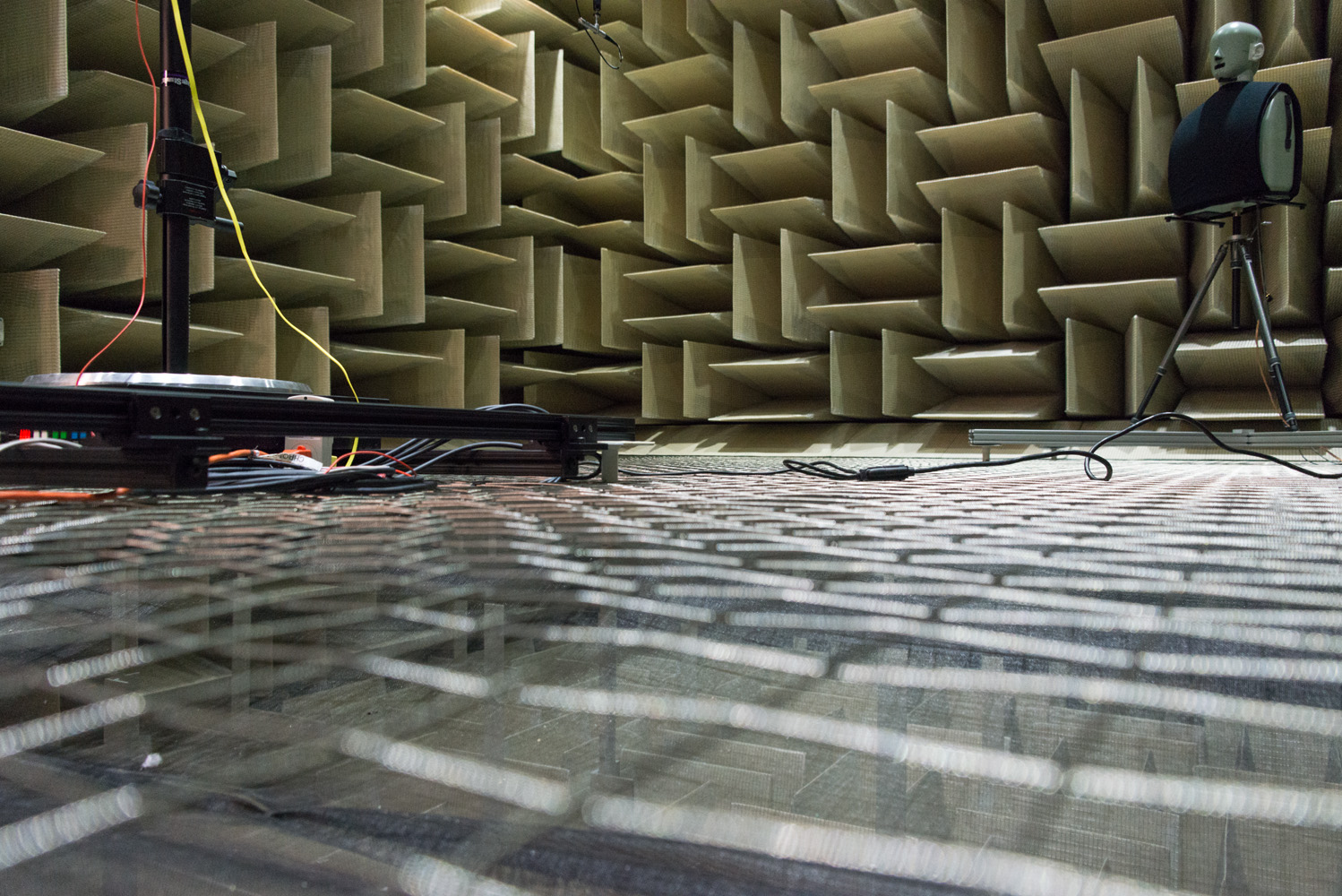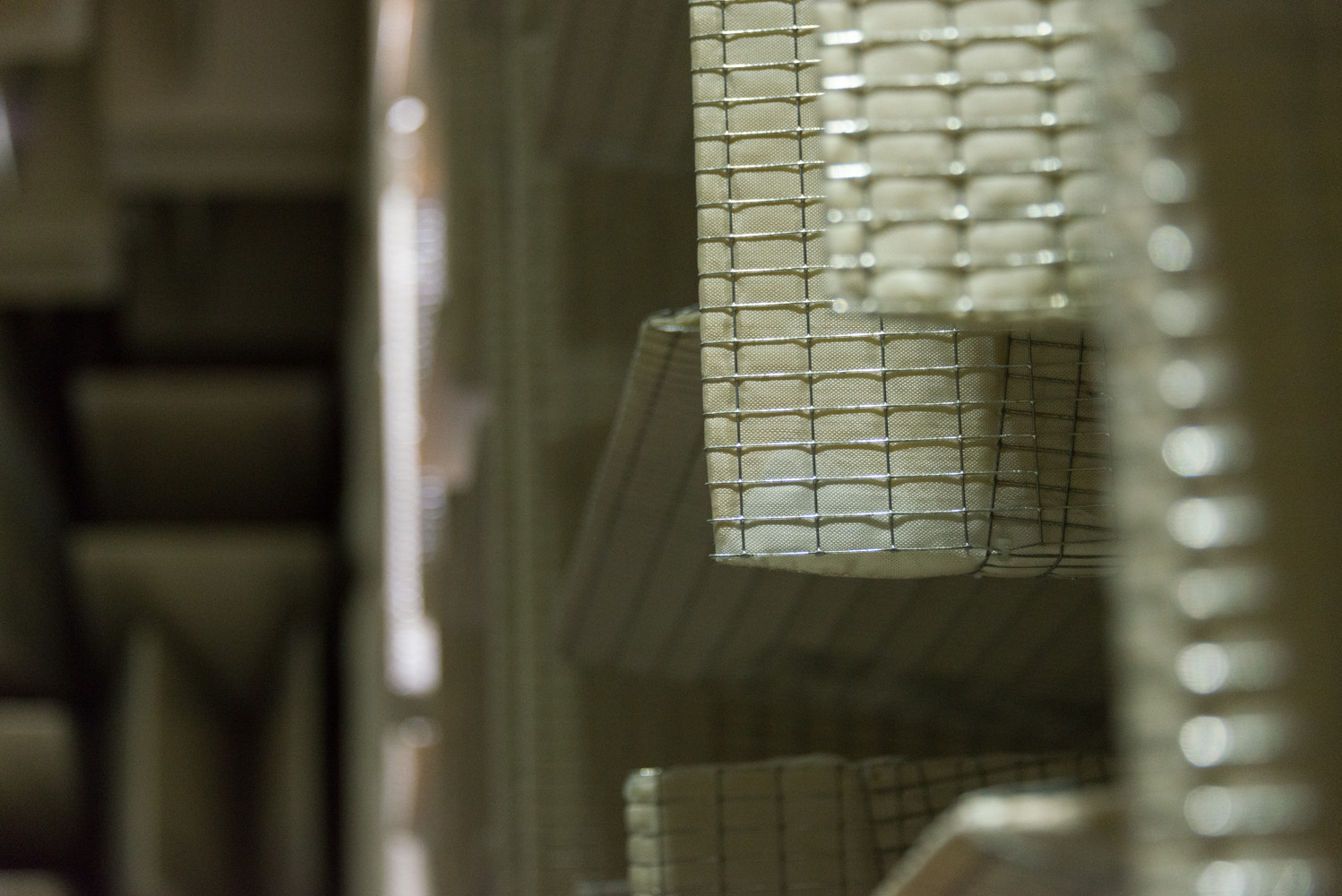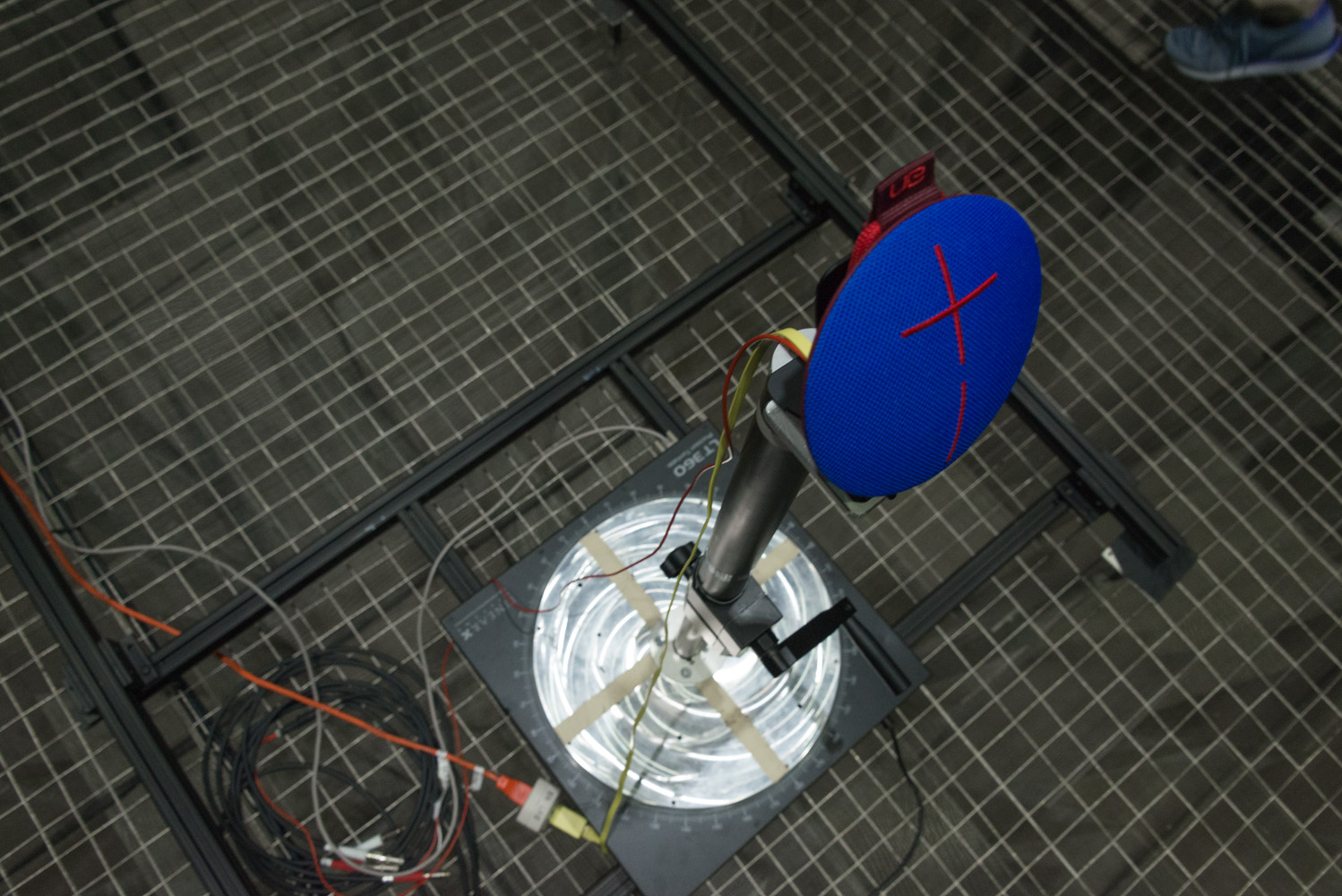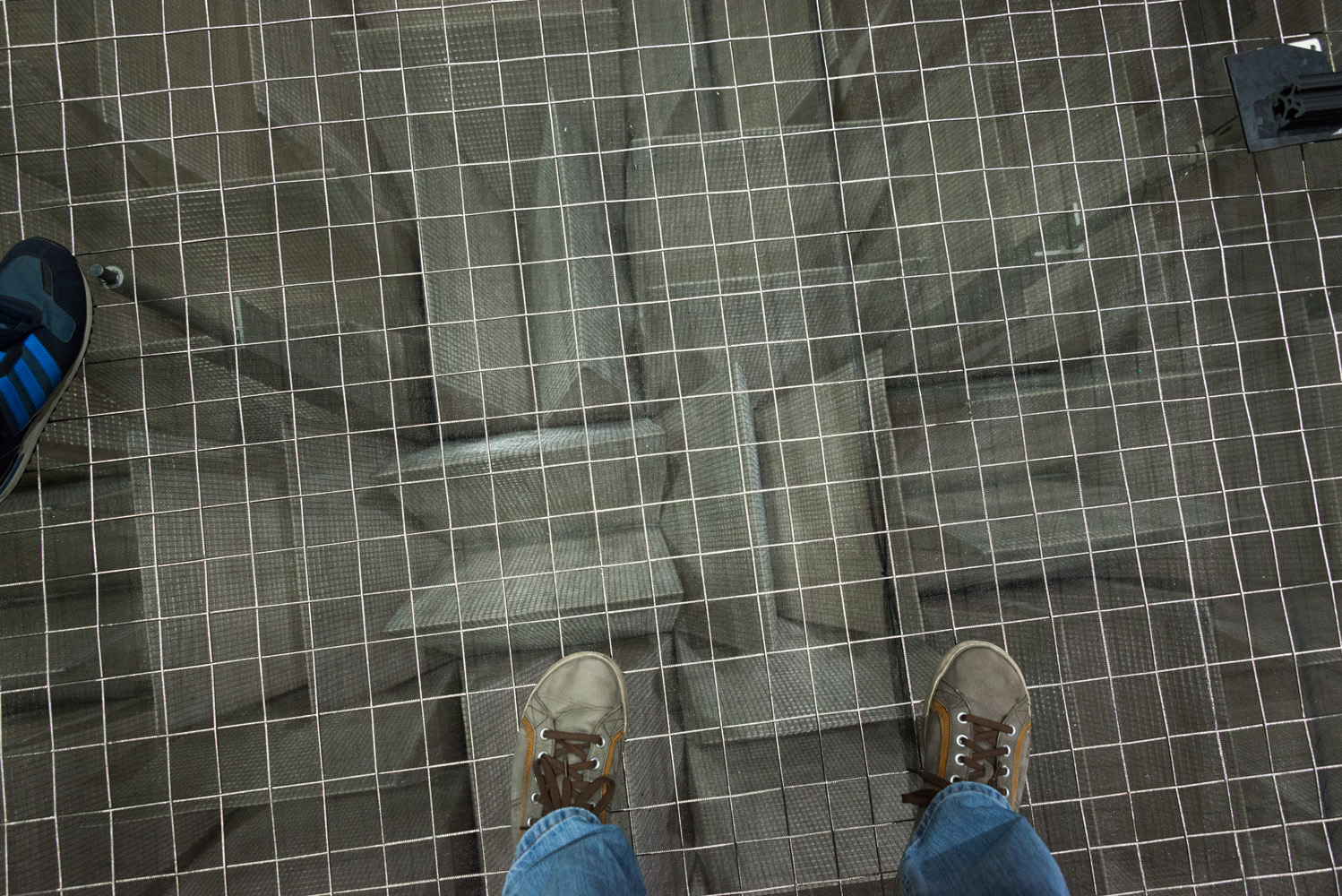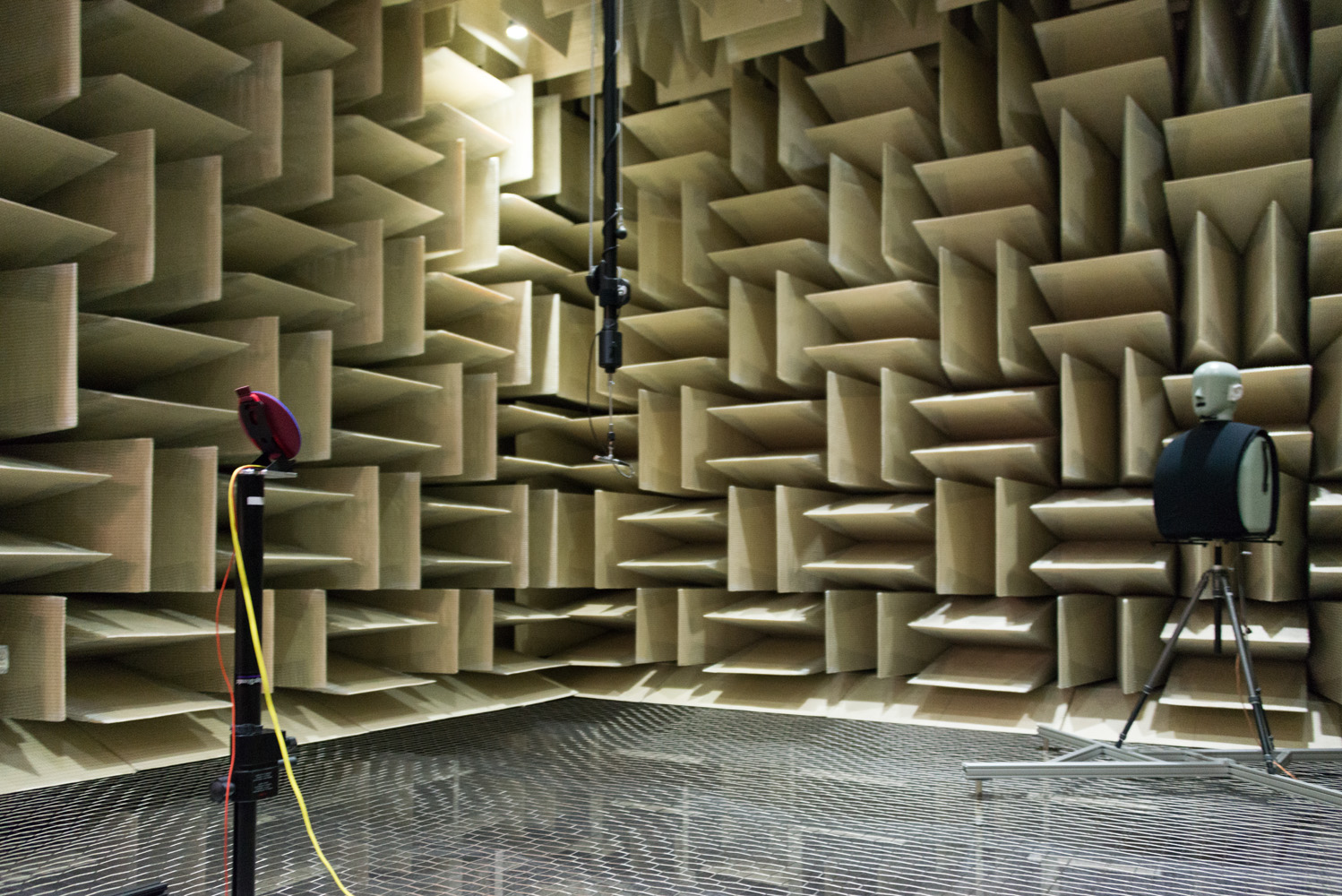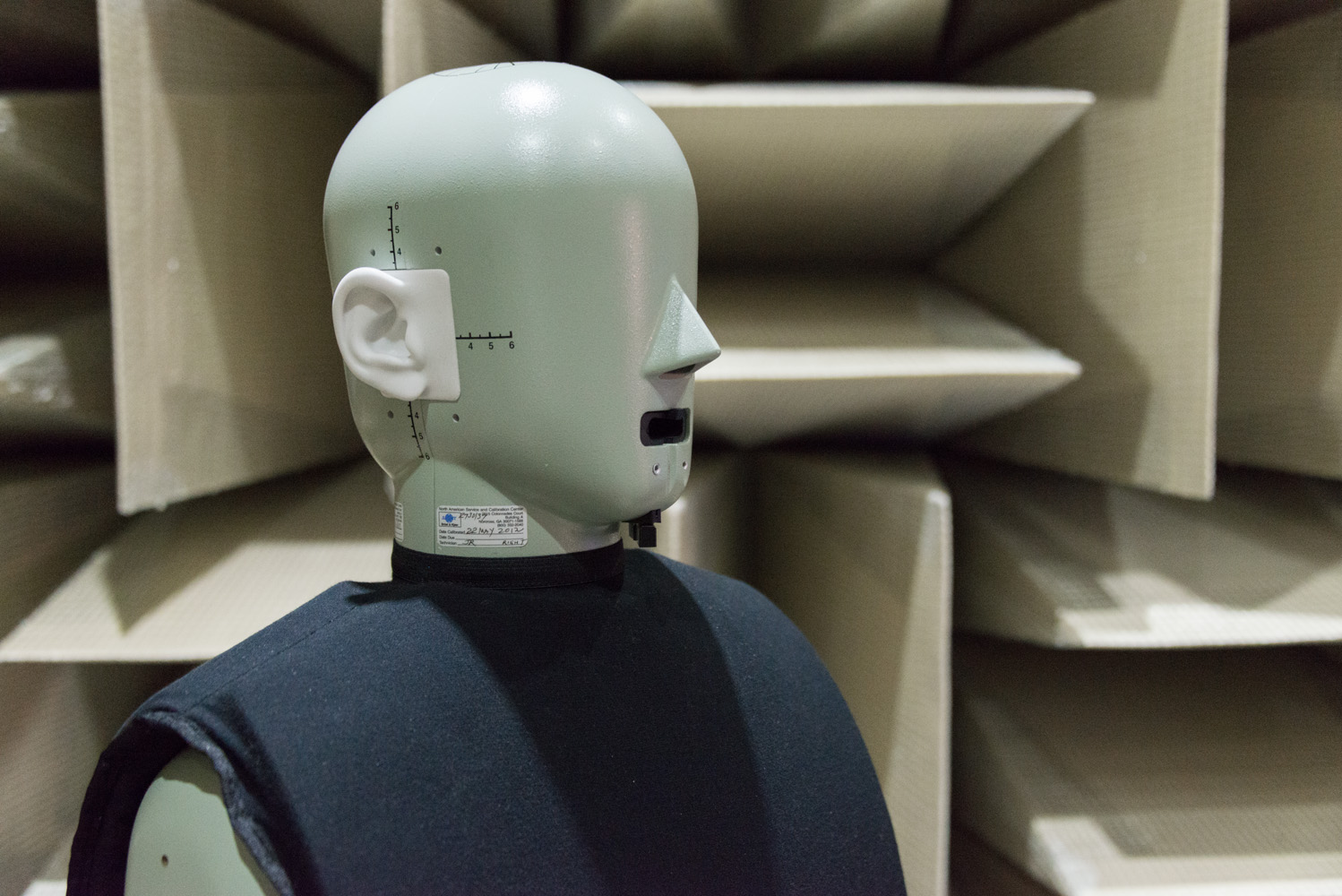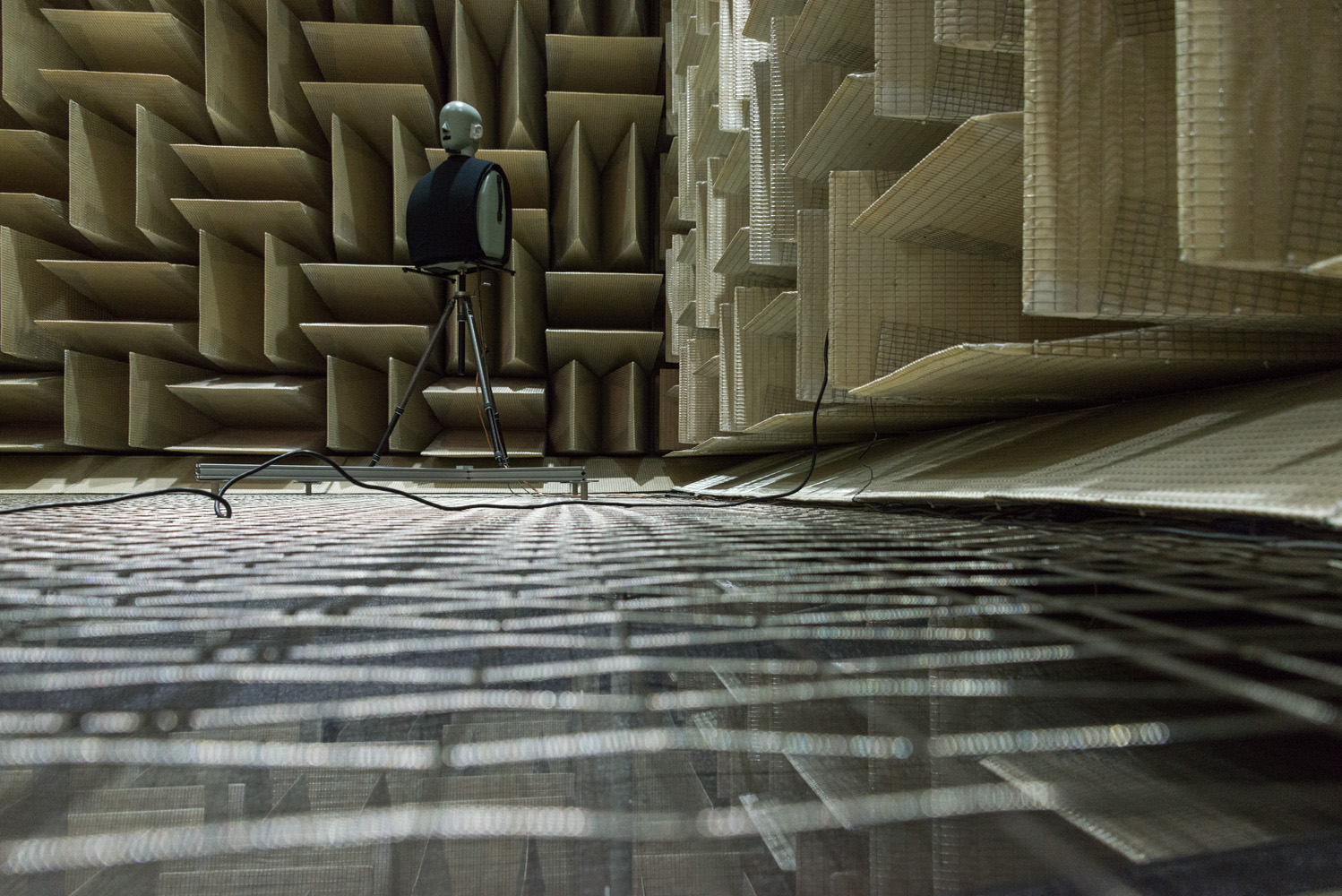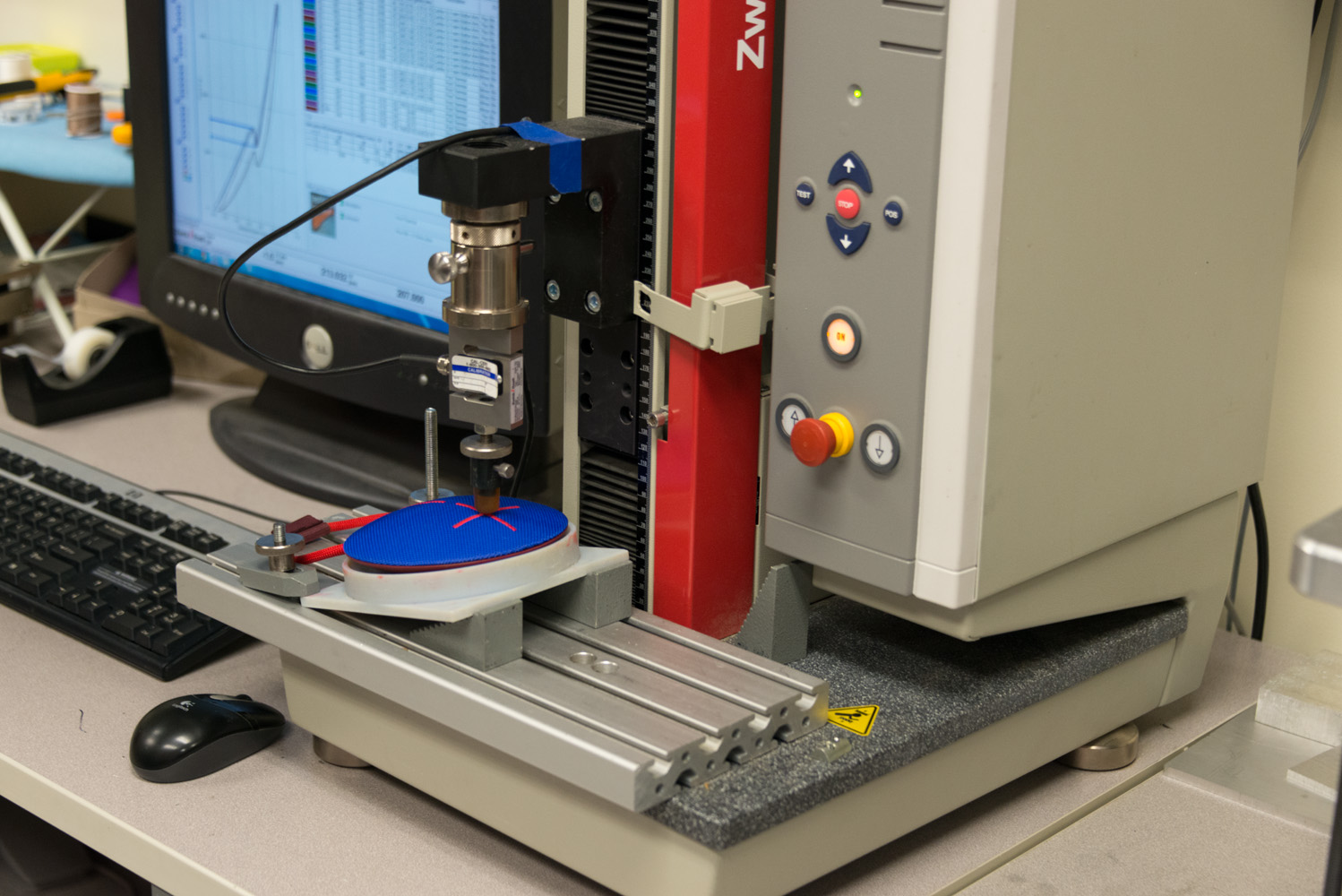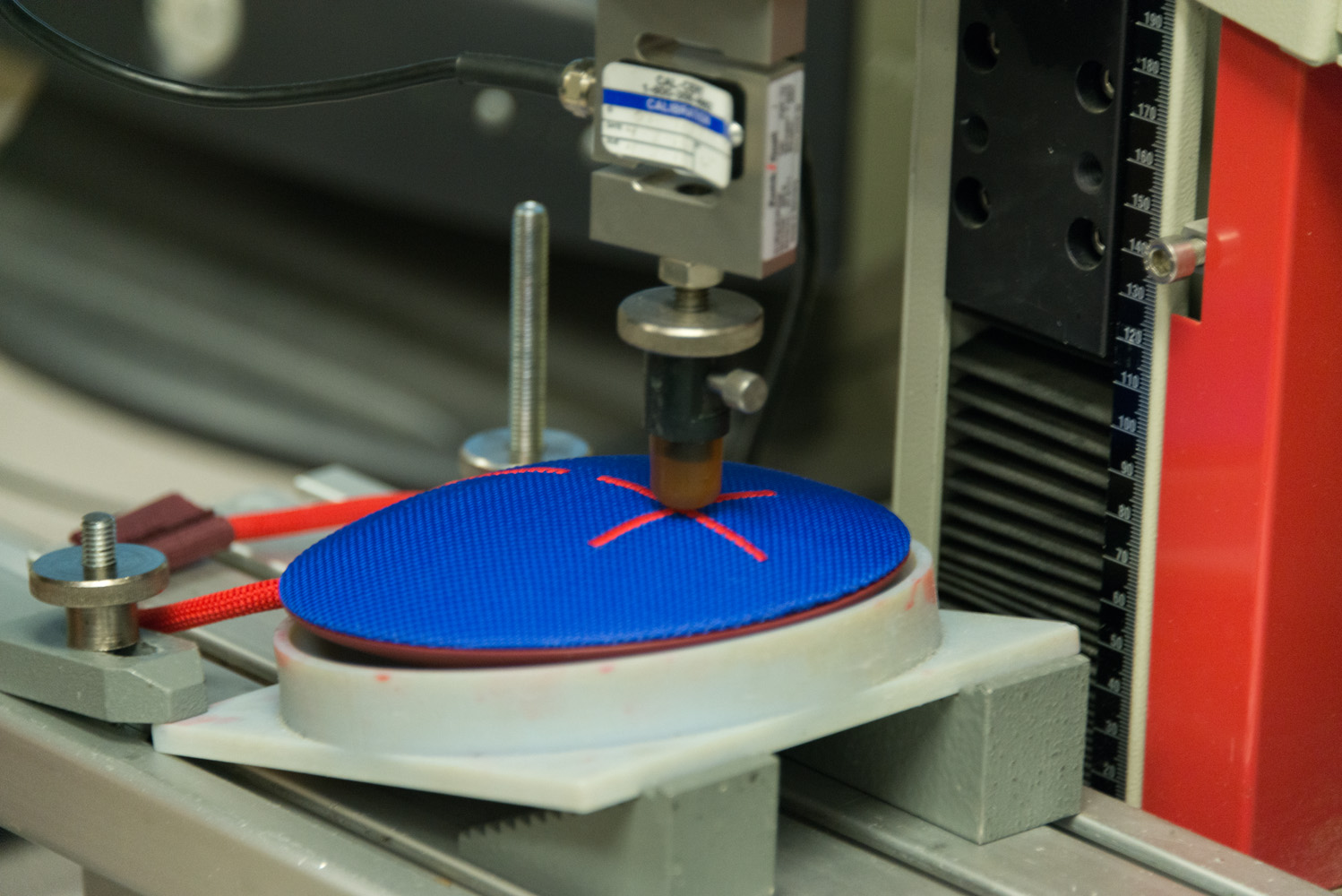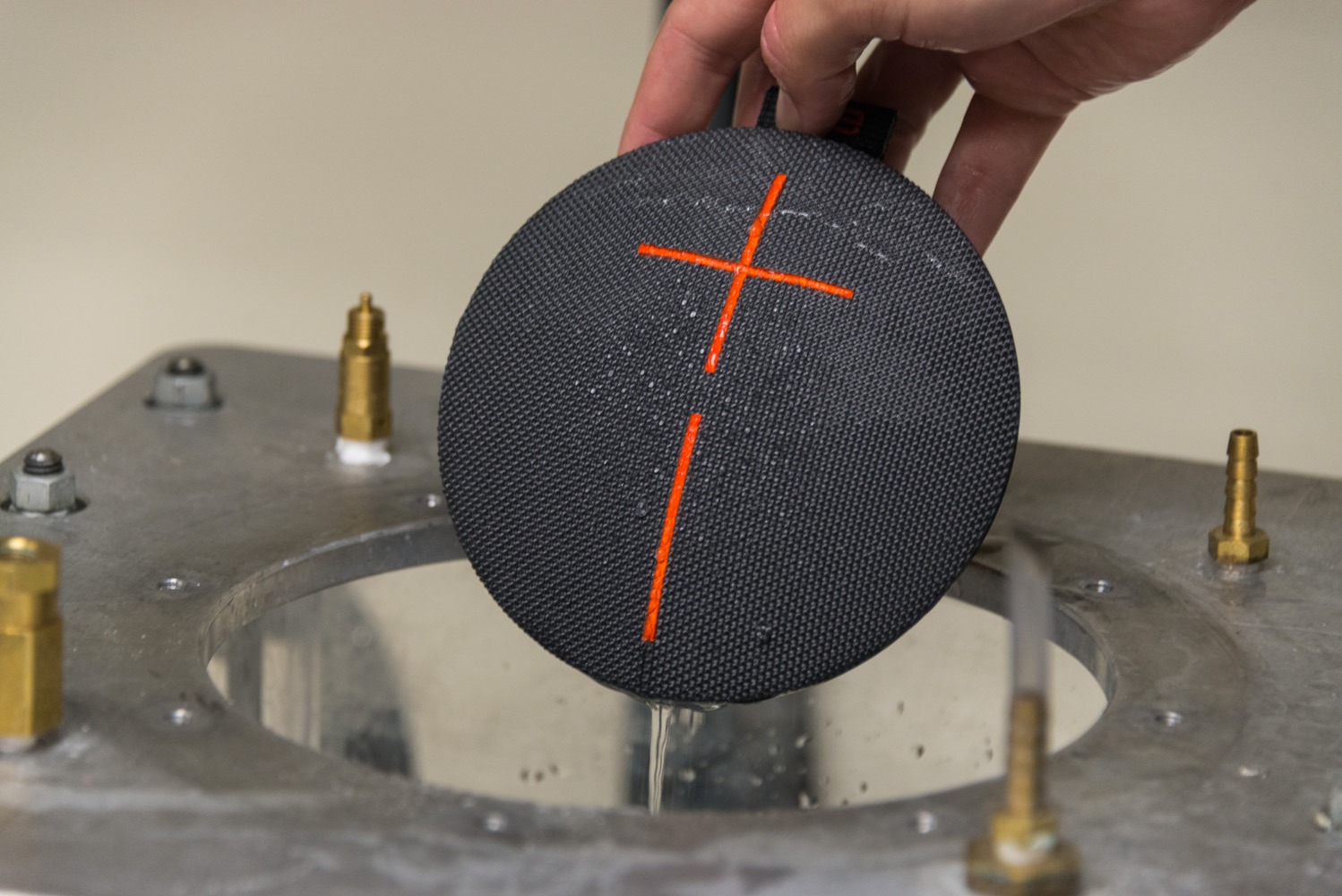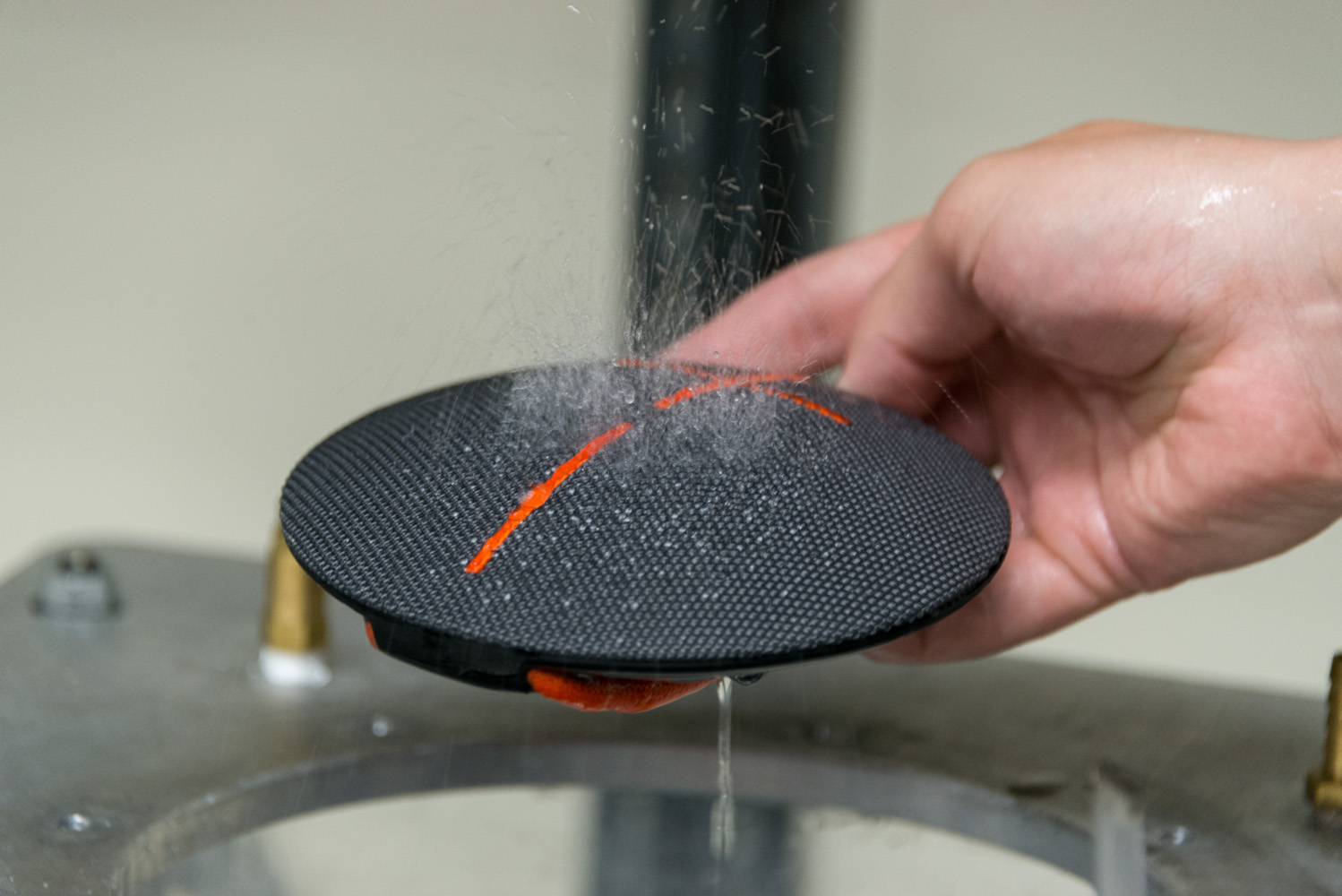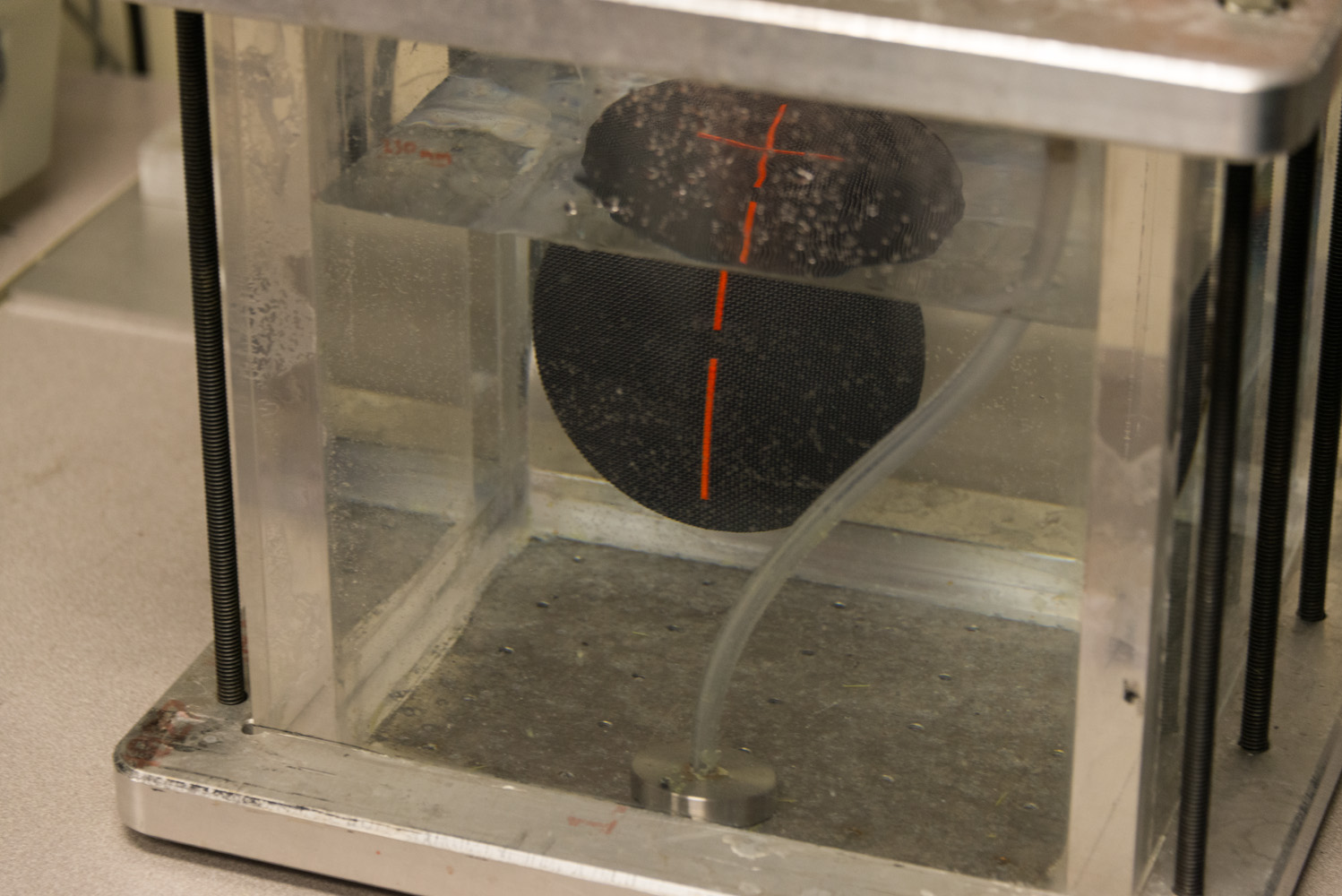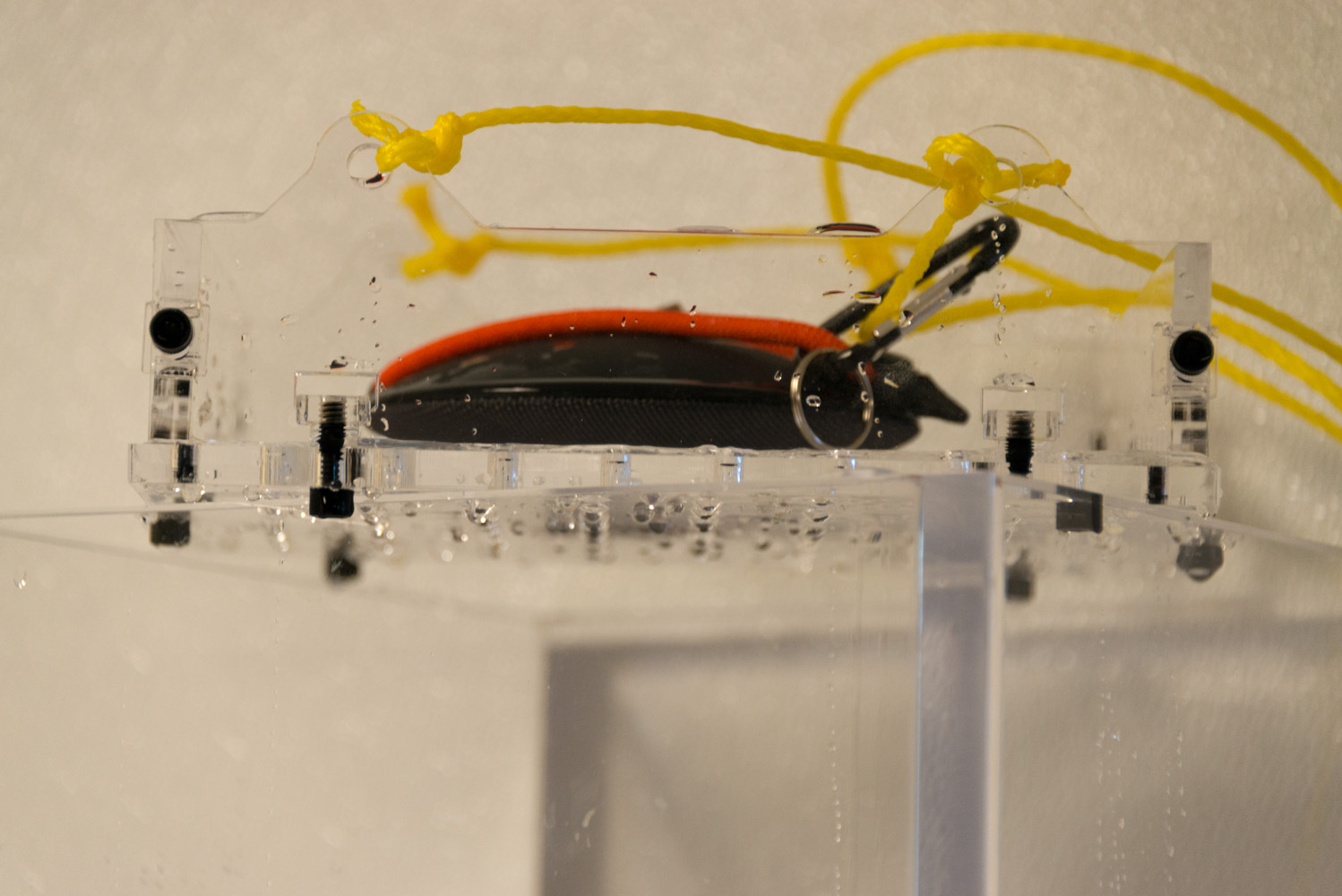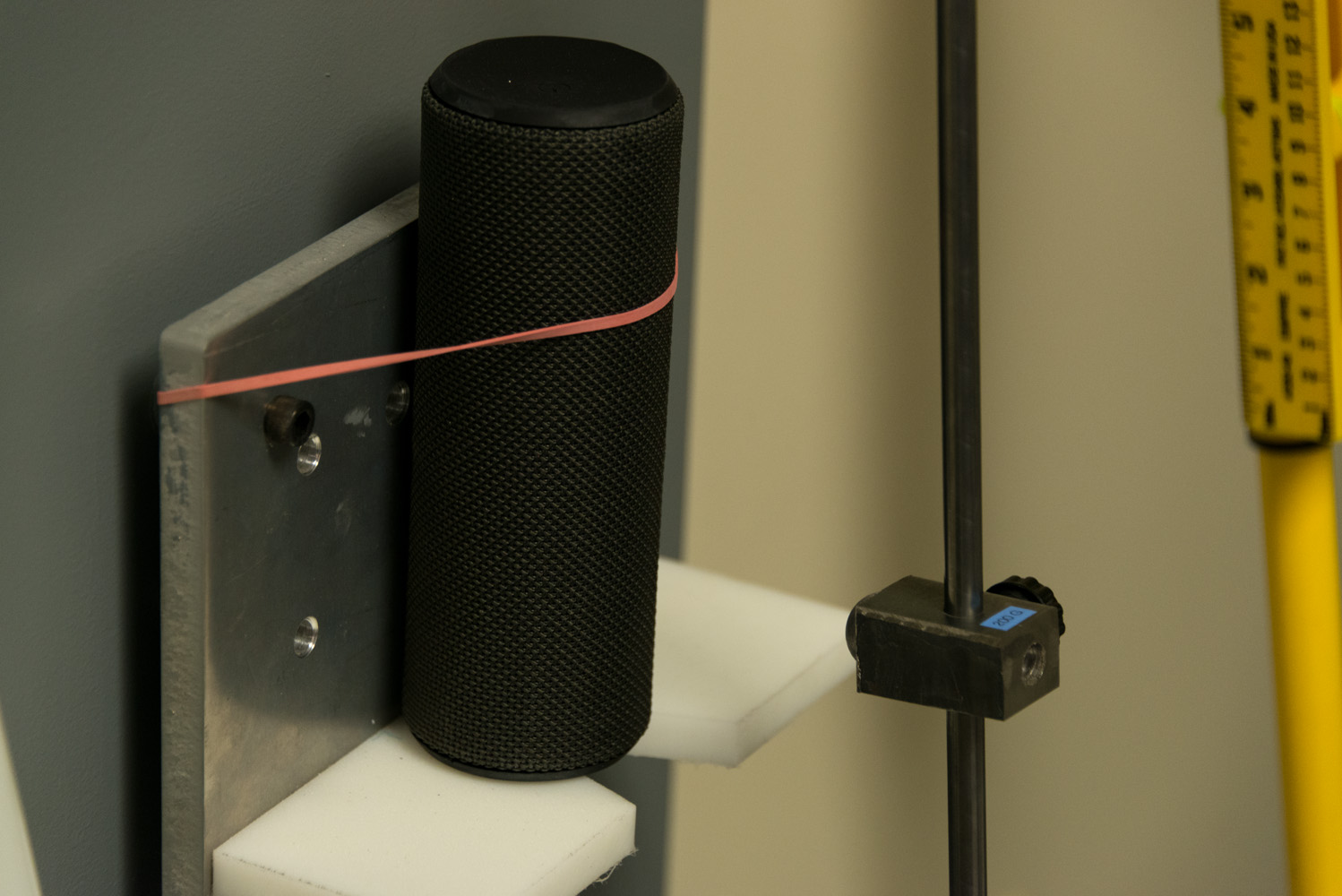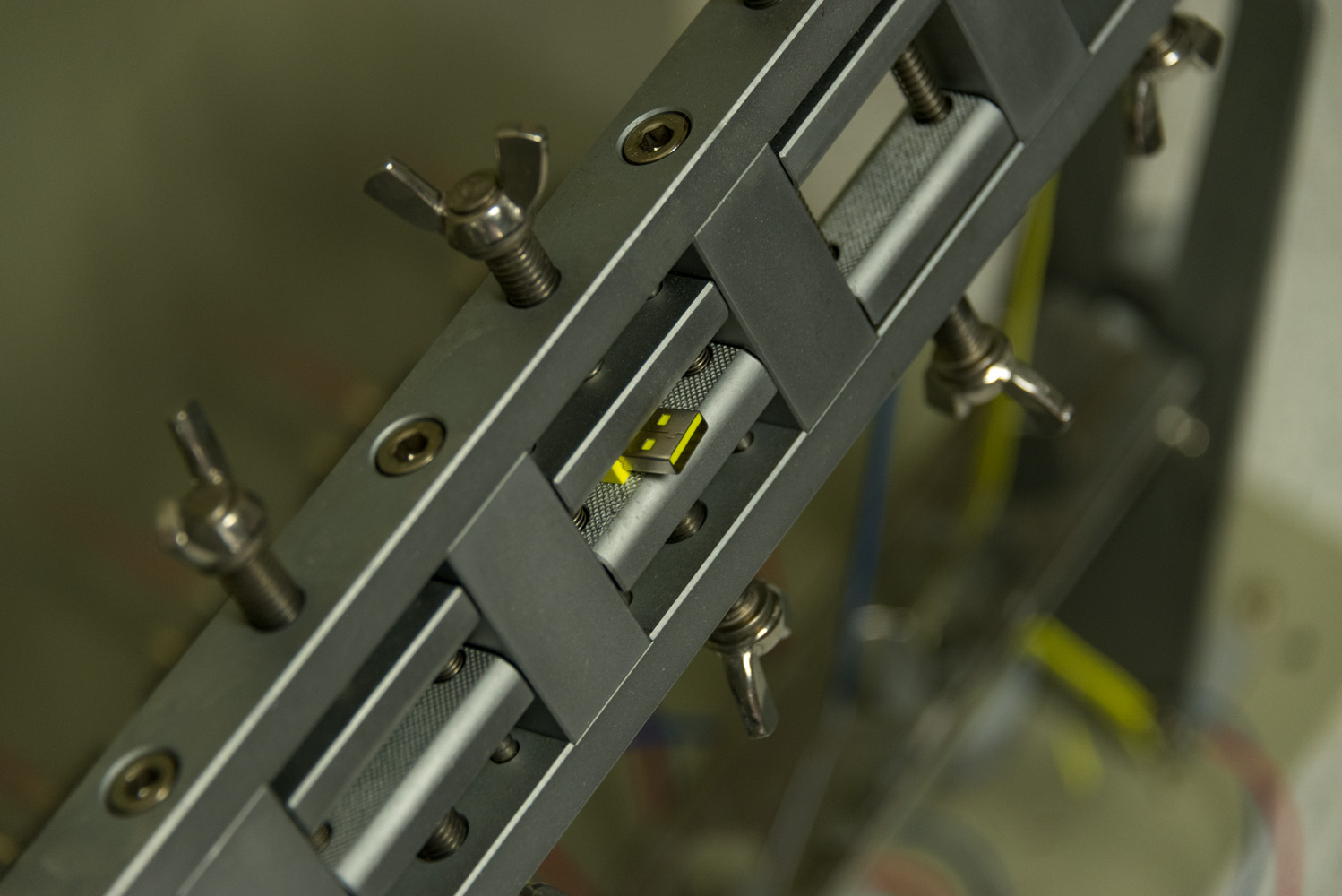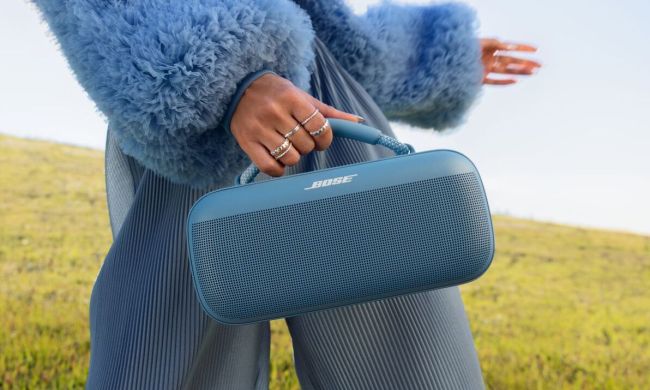Despite its hipstercentric marketing, inside you’ll find none of the neon bikinis or spontaneous piggyback rides that define its ads. Instead you’ll find world-class engineers doing their thing with an arsenal of state-of-the-art equipment. Those kickass speakers are no accident.
Here’s a behind-the-scenes look at how they crank out products that look and sound as awesome as the new Roll.
A whole lotta grey matter
They may not wear denim jackets or headbands like the guys in the ads, but everyone involved in conceiving, planning, designing, engineering, producing, and marketing UE’s products seems to be wildly brilliant and genuinely passionate about what they do. We’ve visited companies where it was clear the troops were fluffed up before our arrival, smiles practically painted on faces — this wasn’t one of those times.
You may not think about these things when you bring your new Roll to the beach, but you’ll appreciate the hell out of them all the same.
Product Development Manager Doug Ebert coordinates this crack team of about 15. When he speaks, it’s clear he is a man who spends a lot of time fretting over minutiae. Despite his best efforts, he lapses into industrial design language and drops byzantine acronyms because he’s so deep into what he’s doing that he forgets he speaks an entirely different language than the rest of the world.
Ebert’s attention to detail helped craft the UE Boom and Megaboom speakers — products that shifted the brand from a boutique maker of custom headphones to a consumer speaker company that gets it. He thinks about things like exotic fabrics, thermoplastic elastomers, essence, sonification, shape, feel, simplicity, packaging, brand message, and brand ID. You may not think about these things when you bring your new Roll to the beach, but you’ll appreciate the hell out of them all the same.
Get it done
Unlike many outfits its size, Ultimate Ears does everything in-house. Rather than shipping a product off to a third party for any number of tests, UE engineers can walk down the hall and perform them on their own, here in the Camas labs. That efficiency means tasks that could take months instead take hours.
A 3D printer helps further hustle the R&D process along. When it developed the Roll, UE simply printed one speaker housing after another, each just slightly different than the one before, all in a matter of hours. With physical examples in hand, engineers were able to immediately study the effects of various alterations to the product’s blueprint. This, in part, is how UE was able to defy the laws of physics and wind up with a product that, frankly, has no business sounding as big as it does.
The same level of detail goes into designing the speaker drivers, which UE produces in-house rather than using off-the-shelf parts. For the Roll, this was an especially arduous task, because the drivers had to produce a lot of sound with almost no room to move. The drivers they needed would have to be light but rigid, and stand up to abuse as well – including exposure to water.
To check all those boxes, the team developed a number of different designs, then tested each of them with a laser-measurement system. Each driver is mounted in front of a laser cannon, which blasts the speaker and collects data while a computer runs test patterns through the driver. Without putting them through arduous real-life testing, the team figured out which drivers would overheat, buckle under pressure, or succumb to good old fashioned wear and tear. In the end, UE ended up with a super-tough driver that also met all the performance specs it demanded.
Behold the chamber of silence
Stepping into an anechoic chamber has been described as other-worldly, disorienting, and even nauseating to some. It’s a sound-proof room designed to create complete silence so that speakers and headphones can be measured with absolutely zero influence from the outside world. Very few exist in the United States, but UE built one, and it was no easy task.
The sensation one gets from entering an environment without reverb, echo or any other reflected sound queues is absolutely surreal.
In order to truly block all sound, you must isolate an anechoic chamber from its surroundings as completely as possible. For UE, that meant pouring an independent foundation separate from the rest of the building it resides in. Huge springs isolate a secondary floor from the foundation so that if a truck drives by outside, few, if any, vibrations leak through. Walls are extremely dense, and constructed away from walls in the surrounding building.
The ceiling and walls are covered with 4-foot deep acoustic baffles designed to absorb sound for zero reflections. Because the actual floor is covered with these baffles as well, a wire mesh “floor” is suspended well above the baffling, further reinforcing the notion that you are somehow floating in the vacuum of space. Even with all these measures, it’s only at 2 a.m. on a weekday that the room reaches 0 decibels — absolute silence.
The sensation one gets from entering an environment without reverb, echo, or any other reflected sound is absolutely surreal, and something we wish everyone could experience. True silence is an amazing thing, and difficult to imagine since it is impossible to achieve in nature. But as much as the anechoic chamber feels like an amusement park ride, it is actually a tool — a very elaborate, expensive tool — for measuring speakers, power supplies … anything that UE wants to be quiet.
For the Roll, UE promises that you get the same listening experience from the speaker in every direction. In this room, engineers tested that claim by popping it on a turntable and measuring its sound output from every angle. Speakers are the most common resident in the anechoic chamber, but UE uses this same room to measure headphones and numerous other devices as well.
Bzzzzt
You know that buzzing sound you sometimes get from a speaker when a nearby phone is about to ring? UE tests for that too, to ensure it never happens with its products. Such testing happens in a thick-walled chamber lined with acoustic foam, with a table on one end and a very serious-looking antenna on the other.
Here engineers look for radio emissions and various other types of radiation coming from the speaker. They need to ensure it will pass federal inspection later down the road, but this can also improve the user experience.
Use it and abuse it
One of the hallmarks of UE’s speaker line-up is its resilience. They can take a beating, or a dunking, and keep the beat going, no matter what. How do they do it? By beating the ever-loving crap out of prototype speakers.
In the so-called “torture chamber,” UE employs a spritely gentleman who clearly takes great pleasure in stress-testing prototypes. There’s a dunk tank, a pressure chamber that can simulate underwater conditions down to 10 meters, and a UV blaster that can simulate six hours under the Miami sun in 60 minutes.
But the best stress test of them all? Korn. To test the resilience of UE’s drivers, testers play Korn for 30 days straight at distortion levels — the ultimate speaker abuse.
Antenna magic
UE recently boosted the wireless range of the Boom from 60 feet to 100 feet for the Boom 2. How do they do it? More testing. UE has advanced equipment that can measure and plot a chart of a Bluetooth signal. With these measuring tools, UE can play around with the positioning and orientation of its Bluetooth chips and antennas to optimize them for long-range performance.
The MOS room
The last stop for any UE speaker is the MOS room. MOS stands for mean opinion score, and like a Roman coliseum, this is where the public weighs in on a speaker to decide whether it lives or dies.
Don’t let the hipster image fool you – Ultimate Ears takes engineering very seriously.
Testers hear a single track that includes clips of seven different songs. This track can be played through any number of speakers, all of which will be hidden out of sight behind an acoustically transparent cloth, eliminating any sort of visual bias. Listeners hear two points of reference: a speaker that ranks low on the sound quality scale — it earns a 1 — and one that ranks high — a 5. The scores are designed to facilitate a language between engineering and artistry.
Ultimate engineering makes the ultimate speaker
Don’t let the blissed-out hipster image fool you – Ultimate Ears takes engineering very, very seriously. From conception to design, there’s a lot more to building a “simple speaker” than they might get credit for – and a lot of opportunities for less diligent competitors to mess up.
Based on our tour, it’s no wonder UE’s wireless speakers are some of the most consistently well reviewed out there. And we hope the Boom, Megaboom, and Roll are just the beginning of that legacy.
